Welcome, or welcome back MyXXFam! If you’re new to the blog, you may not be aware that I, your fly internet blog hostess, am a first generation Nica in Miami. My parents Patricio and Auxiliadora are Nicaraguan immigrants from the town of Chinandega, and brought with them all of the customs and cultural traditions of the motherland. This week on the blog I’ve got my walking shoes on to take you through a tour of one of the most revered customs in the Nicaraguan enclave of Sweetwater in Miami.
Bienvenidos familia! Si sos nuevo a mi blog, tal vez no sabes de que yo, tu anfitriona de MyXXFLY, soy una Nica de primera generación en Miami. Mis padres Patricio y Auxiliadora son inmigrantes Nicaragüenses del departamento mas bello en toda Nicaragua, Chinandega, y trajeron con ellos todas las costumbres y tradiciones culturales de la madre patria. Esta semana en el blog me puse mis zapatos de caminar para llevarlos en una gira por el vecindario, para presentarles una de las costumbres más veneradas en el enclave Nicaragüense de Sweetwater en Miami.
One of the end of year celebrations that connects Nicaraguans across the world is La Griteria. The name is derived from the word gritar meaning “to yell”, because we Nicas are rowdy as fuck even when practicing our piety. During the traditional catholic celebration, Nicas honor La Purisima (loosely translated to mean, not just “pure” but “pure as fuck”, and is a term used to describe the Immaculate Conception of Mary). In the Catholic faith, this depiction of the Virgin Mary differentiates Jesus from other mere mortals or prophets. The lore states that he was born of Mary who, being a virgin, was without original sin. Being born of the purest mother Mary, cements Jesus’ place as the Son of God. In Nicaragua, Mary is venerated and idolatrized. There are various traditions and celebrations held in her honor throughout the year, but on December the 7th? La Griteria hits, and Nicas go all out.
Una de las celebraciones de fin de año que conecta a los Nicaragüenses en todo el mundo es La Griteria. El nombre se deriva de la palabra gritar, porque a nosotros Nicas nos encanta el alboroto y bacanal incluso cuando practicamos nuestra piedad. Durante la celebración católica tradicional, Nicas honran a La Purísima (un término usado para describir la Inmaculada Concepción de María, por que como nostros somos unos exagerados, ella no es solo pura, si no purISIMA). En la fe católica, esta representación de la Virgen María diferencia a Jesús de otros simples mortales o profetas. La historia dice que nació de María que, siendo virgen, era sin pecado original. En tener la madre más pura, María, se cimenta el lugar de Jesús como Hijo de Dios. En Nicaragua, María es venerada e idolatrada. Hay varias tradiciones y celebraciones en su honor durante todo el año, pero el 7 de diciembre? La Griteria es cuando se nos pasa la mano.
We visited the Miami neighborhood where my grandparents used to hold their own Purisima for the nostalgia, and also because it is a neighborhood with a high concentration of Nicamericanos who celebrate La Purisima in their front yards. At La Purisima of the Blanco Betanco and Arauz Blanco family, the patriarch proudly gave me a history lesson of the origins of La Griteria. He is a native of Leon, Nicaragua where the celebration was born 350 or so years ago at the Church of San Francisco from where it spread to the rest of the country. Arguably, Leon is the place to be on December 7th, as its rich history, grand architecture, and fervor for the celebration attracts massive crowds. But you don’t have to be in Leon to experience this devout custom, you’ve just gotta find some determined Nicaragüenses with their figurines of La Virgen.
Visitamos el barrio de Miami donde mis abuelos tenian su propia Purisima para la nostalgia, y también porque es un barrio con una alta concentración de Nicamericanos que gritan La Purísima. En La Purísima de la familia Blanco Betanco y Arauz Blanco, el patriarca me dio orgullosamente una lección de historia de los orígenes de La Griteria. El nació en León, Nicaragua, donde la celebración inicio hace unos 350 años en la Iglesia de San Francisco, de ahí se difundió al resto del país. León es donde se anhela estar el 7 de diciembre, ya que su rica historia, su gran arquitectura y su fervor por la celebración atraen a multitudes masivas. Pero no tenes que estar en León para vivir la experiencia de esta devota costumbre, sólo tienes que encontrar algunos Nicaragüenses con fe, y sus figuras de La Virgen.
The Statuette
You can’t have a Griteria without a statuette of La Purisima front and center, she is after-all, the star of the motherfucking show. Some statuettes are passed down from generation to generation, others may be given or received as gifts since tradition states this is good luck. The one pictured here was a gift my mother received from her great-aunt Maria Hilda Zamora, on her 15th birthday (or quinces). Although it was technically my mom’s, abuela and abuelo fell in love with her, and she lived at their house for decades. They were among the first wave of Nicaraguan immigrants in Miami, and decided to continue the tradition here along with their neighborhood friends, at a time when it was virtually unheard of in Miami. After my grandparents passed away, my uncle Chele asked my mom if he could hold on to the statuette, and he displayed her in an artfully and beautifully kept altar in his home until his passing last November. When it was returned to its rightful owner (my momma), she continued the tradition, and this is her second year hosting a celebration in the Virgin’s honor.
No puedes tener una Griteria sin una estatuilla de La Purisima en frente y en el centro, ella es en fin, la estrella del show. Algunas estatuillas se transmiten de generación en generación, otras pueden ser regalos ya que la tradición afirma que esto es buena suerte. La que se ve aquí fue un regalo que mi madre recibió de su tía abuela María Hilda Zamora, para sus quinces. A pesar de que técnicamente era de mi mamá, abuela y abuelo se enamoraron de ella, y ellos Gritaron La Virgen durante décadas. Mis abuelos estaban entre la primera ola de inmigrantes Nicaragüenses en Miami y decidieron continuar la tradición aquí junto a sus amigos del barrio, en un momento en que esa costumbre todavía no existia en Miami. Después de que mis abuelos se fueron al cielo, mi tío Chele le preguntó a mi mamá si el podía cuidar a la estatuilla, y la tenia en un bello altar en su casa hasta su fallecimiento en Noviembre del 2015. Cuando La Purisima fue devuelta a su legítimo propietario (mi mamá), ella continuó la tradición, y este es su segundo año Gritando la Purisima.
If you ever receive a statuette of La Concepcion de Maria from a Nica, consider yourself one of us. Many of the porcelain statuettes are crafted and painted by hand, then blessed by priests before they are sold to the general public. The details in some of these statuettes are incredible. The glass doll eyes will take you on a trip into the uncanny valley when you look into them, and the expressions on the faces of the Mary’s are made to be as soft and angelic as the gaze of a loving mother. One of the Purisimas we visited was that of local grade-school Spanish teacher Milton Pallais. His statuette was a gift from his cousin, and you could see the adoration in his eyes as he spoke about his reason for celebrating this tradition. He underwent a quadruple bypass surgery, and prayed to La Virgen to perform a miracle on his behalf, vowing to celebrate her if he lived. His devotion to La Purisima is evident in his description of his statuette, which he customized himself by adding angels and life like clouds at her feet.
Si alguna vez recibes una estatuilla de La Concepción de María de un Nica, considera que eres uno de nosotros. Muchas de las estatuillas de porcelana están hechas y pintadas a mano, y luego bendecidas por sacerdotes. Los detalles en algunas de estas estatuillas son increíbles. A veces, los ojos de cristal parecen ser reales, y las expresiones en los rostros de las Marias son suaves y angelicales como la mirada de una madre cariñosa. Una de las Purísimas que visitamos fue la de maestro de español, Milton Pallais. Su estatuilla era un regalo de su prima, y se podía ver la adoración en sus ojos cuando el hablaba de su motivo por celebrar esta tradición. Se sometió a una cirugía de corazon bypass cuádruple, y rezó a La Virgen para realizar un milagro en su nombre, prometiendo Gritarla si vivía. Su devoción a La Purísima es evidente en su descripción de su estatuilla, que el mismo personalizó añadiendo ángeles y nubes a sus pies.
The Altar
The next step, is building the Virgen an altar. Now, I’m sure you’ve heard you shouldn’t put pussy on a pedestal, but this is the womb of the sacred virgin who gave birth to Jesus Christ bruh. Put her on a goddamn pedestal.
El siguiente paso, es la construcción de un altar para la Virgen. Ahora, estoy seguro de que has oído que no se debe alabar a los falsos ídolos, pero no se equivocen, ella es simplemente un símbolo del devoto. Siendo el vientre de la virgen sagrada que dio a luz a Jesucristo, anda y hacele un pedestal lindo no jodas.
The altars to La Purisima can range from the trunk of someone’s car or a table draped in fabric, to a custom made wooden pedestal or marble pillar. The altar’s vary wildly because the way they are decorated reflect the personality and abilities of the host. Some people keep the aesthetic traditional, and stick to a color scheme of the Nicaraguan flag; white flowers, lace, and lights with accents of blue. Some will go with a surrealist theme and add a background of billowing clouds with giant rounds of draped cotton to give the illusion that La Virgen is in the heavens. Others bring La Purisima down to earth with a wildly colorful and alegre homage. Handmade multicolored florettes and twinkle lights, billowing fabrics, and scenes of landscapes of the motherland surround her. For example, the background at La Purisima of Milton Pallais is a high quality shower curtain he purchased with a scene printed from a photograph of a flowery field, and he already has a different one prepared for next year. At my mom’s Purisima, the background was a handpainted scene of a volcanoscape by friend of the families, middle-school artist Paola Padilla. The Padilla’s graciously lent their home for a rezo my mom organized, which is a variation of the tradition where a group comes together to formally pray the rosary before La Griteria ensues.
Los altares de La Purísima se pueden hacer en cualquier lado, desde el tronco de un carro, o una mesa envuelta en tela, hasta un pedestal de madera o un pilar de mármol hecho a la medida. El altar varía enormemente porque su decoración refleja la personalidad y las habilidades del anfitrión. Algunas personas mantienen la estética tradicional, y se adhieren a un esquema de colores de la bandera Nicaragüense; flores, encajes, y luces blancas con acentos de color azul. Algunos irán con un tema surrealista y añadirán un fondo de nubes ondulantes con gigantescas rondas de algodón drapeado para dar la ilusión de que La Virgen está en los cielos. Otros traen a La Purisima a la tierra con un homenaje colorido y alegre. Flores de multicolores hechas a mano y luces centelleantes, tejidos o bellos encajes y escenas de paisajes de la madre patria la rodean. Por ejemplo, el fondo en La Purísima de Milton Pallais es una cortina de baño de alta calidad con una escena impresa de una fotografía de un campo florido, y él ya tiene una diferente preparada para el proximo año. En la Purisima de mi mama, el fondo era una escena pintada a mano de un volcán por la joven artista Paola Padilla. Los Padilla graciosamente prestaron su casa para un rezo que mi mamá organizó, que es una variación de la tradición donde un grupo se reúne para orar formalmente el rosario antes de que La Griteria surja.
An altar can be as simple or whimsical as you desire, and is only limited to your imagination. The one and only requirement is that it be done with the love of honoring La Virgen. The displays are a moment in time when those who are devout to La Purisima will gather resources and pay homage to thank her for the miracles and blessings she has brought into their lives. The Purisima at the home of Alfonso and Maria del Socorro Boza, began two years ago when one of the younger members of their family had a year he was exceptionally thankful for. They lent their home for this first tribute to La Virgen, and now have members from the entire family of all ages join in the preparations. These celebration are where we give thanks for blessings past, but also pray to La Virgen for guidance and whatever help we may currently seek.
Un altar puede ser tan simple o elaborado como usted desea, y se limita solamente a su imaginación. El único requisito es que se haga con el amor de honrar a La Virgen. Las exhibiciones son un momento en el que aquellos que son devotos de La Purísima recogen recursos y rinden homenaje para agradecerle a la Virgen por los milagros y bendiciones que ha traído a sus vidas. La Purísima en la casa de Alfonso y María del Socorro Boza, comenzó hace dos años cuando uno de los miembros más jóvenes de su familia tuvo un año en el que estaba excepcionalmente agradecido. Ellos prestaron su hogar para este primer homenaje a La Virgen, y ahora tienen miembros de toda la familia de todas las edades que participan en los preparativos. Estas celebraciones son donde damos gracias por las bendiciones que la Virgen nos da, pero también es un momento cuando le rezamos a La Virgen por orientación y cualquier ayuda que necesitemos actualmente.
I feel that this celebration is so special to Nicaraguans worldwide because it is indiscriminate and wholly inclusive. It doesn’t matter if you are wealthy or poor, anyone with the will to celebrate, a statuette, or even a simple illustration of La Virgen can participate in La Griteria. It is not a celebration of the host alone, but of and for all. But let’s say you don’t have the means or desire to host one, maybe you aren’t Nica, and have no intrinsic connection to the festivities but still want to be a part of it in some way. Well, don’t fret my pet.
Yo siento que esta celebración es tan especial para los Nicaragüenses porque es indiscriminada y totalmente inclusiva. No importa si somos ricos o pobres, cualquier persona con la voluntad de celebrar, una estatuilla, o incluso una simple ilustración de La Virgen puede participar en La Griteria. No es una celebración del anfitrión solamente, sino es de, y para, todo el mundo. Pero digamos que usted no tiene los medios o el deseo de gritar La Purisima, tal vez usted no es Nica, o no tiene ninguna conexión intrínseca a las festividades, pero todavía quieren ser parte de ella de alguna manera. Bueno, no te preocupes amor, esta fiesta es para todos.
La Gorra
So if you know even a little bit of Spanish, you’re probably all “La Gorra? What the hell do hats have to do with this tomfoolery?”. Well, “gorra” in the context of this celebration refers to the heaps, and mounds, and piles of food and gifts that are given out during a Griteria. Yup, plot twist. Once you’ve set up your display, you’ve gotta stockpile massive amounts of goodies to give out during the festivities. That’s right, not only do Nicas set up altars and statuettes for their beloved mother Mary, they will give you shit if you come and visit her. Good shit too. From trinkets and toys for the kiddos, to fresh fruits and veggies, traditional candies, rosquillas, drinks like cacao, and even street foods like elote and vigoron. Anyone who wishes to participate; Latin Americans, Persians, Kryptonians, it don’t matter, all you’ve gotta do is roll through.
Ahora, si sabes hasta un poquito de español, probablemente te estas preguntando “La Gorra? ¿Qué tienen que ver los sombreros con esta tontera?”. Bueno, “gorra” en el contexto de esta celebración se refiere al cachimbo de cosas, comidas, y regalos que se dan durante una Griteria. Asi mismo, me entendistes bien. Tenes tu estatua, le hiciste un altar precioso, ahora te falta recoger montones de cosas para repartirle a la gente que viene a visitar tu Purisima. Y lo que te van a dar, siempre vale la pena. Entre los chunches estan juguetes para los niños, a frutas y verduras frescas, caramelos, gofio, rosquillas, cacao, elote, vigoron. Vas a sentir que te moristes y estas en el cielo a la derecha del padre vos chavalo, ño, que delicia.

Compiling your gorra doesn’t mean you’ve got to be loaded to put on a Purisima either. La Griteria is community organizing at its finest. It’s a group effort where friends and family will donate goods, money, or volunteer their time in order to make the event grand and memorable. At La Purisima of Gloria and Lino Alfredo Ortiz, they have been setting up an altar for La Virgen for nearly fifty years. It is a tradition they inherited from their parents and continue to honor in gratitude for the favors and healing their family has received over the years. Every Purisima is a production in memory of loved ones who have passed on, in their case Doña Celinita, Don Benito, and Doña Anita. The preparation goes on for hours, where friends and family come together to build and decorate the altar which starts at the break of dawn on December 7th. Food for la gorra is cooked and prepared, and volunteers serve and hand out the goods into the night.
Compilar su gorra no significa que usted tiene que ser millonario tampoco. La Griteria es un ejemplo excepcional de organización comunitaria. Es un esfuerzo de grupo donde los amigos y la familia donán cosas, dinero, o se apuntan a ser voluntarios para que el evento sea grandioso y memorable. En La Purísima de Gloria y Lino Alfredo Ortiz, han estado montando un altar para La Virgen durante casi cincuenta años. Es una tradición que heredaron de sus padres y siguen honrando en gratitud por los favores y la curación que su familia ha recibido a través de los años. Cada Purísima es una producción en memoria de seres queridos que han falleciso, en su caso Doña Celinita, Don Benito y Doña Anita. La preparación continúa durante horas, donde amigos y familiares se reúnen para construir y decorar el altar que comienza en el amanecer del 7 de diciembre. Los alimentos para la gorra se cocinan y se preparan, y los voluntarios sirven y entregan las cosas hasta que oscurezca la noche.
La Griteria
Remember how I mentioned Griteria means TO YELL. Well, that’s where this comes in. The way you let a host know that you’re ready to praise and sing to La Virgen is by yelling “Quien Causa Tanta Alegria?!” (Who causes so much happiness?!), to which they respond “La Concepcion de Maria!” (The Immaculate Conception of Mary!).
Y porque se llama Griteria al fin? Porque vamos a gritar! La forma en que usted deja a un anfitrión saber que está listo para cantarle a La Virgen es gritando “Quien Causa Tanta Alegria ?!” a lo que responden “La Concepción de María!”
That loosens up the vocal chords for the singing. Oh, yeah, that’s the culmination of this epic celebration, you sing your heart out to La Purisima! Think of La Griteria as caroling on roids. There are hymns, and traditional ditties that are sung at the foot of each altar. Whether you’re a seasoned pro, or a first timer, if you lost your place in the song, or sang off key, the important thing is to show up and praise Maria. Don’t know the songs? It’s all good bruh, we’ve got you covered. Someone will slap a song-book in your hand, and then a fistful of candy for all of your heartfelt effort.
Eso afloja las cuerdas vocales para cantar. Oh, sí, esa es la culminación de esta celebración épica, ¡cantandole a La Purísima! Ideay que pensabas vos? Que por tu linda cara te hiban a dar gorra? No jodas, hay que cantar. Hay himnos tradicionales que se cantan al pie de cada altar. Si usted es un profesional con vos de angel, o canta por las cuajadas, si se le olvidaron las palabras, pero hizo un intento valiente, no se preocupe, lo importante es alabar a María. ¿No te sabes las palabras? Tranquilo, alguien te dará un librito de canciones, y luego unos caramelos por todo tu sincero esfuerzo amor.
At the Purisima of the Blanco Betanco and Arauz Blanco family, giant speakers blasted the traditional songs from a CD. At Milton Pallais altar? His teacher showed as he had lyrics to some of the most popular songs printed on giant card stock so people in the crowd could follow along if they didn’t have their own song books.
En la Purísima de la familia Blanco Betanco y Arauz Blanco, tienen parlantes enormes donde tocan las canciones tradicionales a medio de un CD. ¿En el altar de Milton Pallais? Maestro al fin, el tuvo la brillante idea de poner las letras de las canciones más populares en cartulina gigante! Asi, la gente en la multitud podian seguir las letras sin excusa.
Quien Causa Tanta Alegria?!
La Concepcion de Maria in the hearts of the Nicaraguan people is not just a statuette on an altar that they sing to once a year, she represents so much more than that. Anytime you speak about religion or Catholicism you will undoubtedly hear criticism, even from other Christians who feel that praising La Virgen is sacrilegious. Outsiders, both young and old wonder about this tradition which to the uninformed observer may seem bizarre as fuck, and I can’t blame them. My favorite part about La Purisima are the beautiful sights of the altars, the smells which often include candles and coal burning incense the smoke of which fills the air, and the sounds of the singers which can range from beautiful to fairly terrifying wails if we’re keeping it real. But I understand how all of these elements brought together might look like goddamn insanity or mass hysteria if you don’t know what the fuck is going on.
La Concepción de María en los corazones del pueblo Nicaragüense no es sólo una estatuilla en un altar a que le cantan una vez al año, representa mucho más que eso. Cada vez que se habla de religión o catolicismo, sin duda oirás críticas, incluso de otros cristianos que sienten que el elogiar a La Virgen es sacrílego. Los desconocidos, tanto jóvenes como viejos se preguntan sobre esta tradición que para el observador desinformado puede parecer extraño, y no puedo culparlos. Mi parte favorita de La Purísima son las hermosas vistas de los altares, los olores que a menudo incluyen velas y carbón quemando incienso cuyo humo llena el aire, y los sonidos de los cantantes que pueden oscilar entre himnos bellos y alaridos no tan bonitos. Pero entiendo cómo todos estos elementos juntos podrían parecer locura o histeria en masa si no sabes lo que está pasando.
My mom and her brothers wondered about the ritual as kids, as my brother and I did, and as the younger family members I talked to at the Boza family’s Purisima still do. So why all the fanfare and hooplah over Maria sin pecado original? Well, the people that gather around a Purisima aren’t worshipers of a bust at a pagan temple, the statuettes are praised not for what they are but for what they represent. La Concepcion de Maria is the faith that lives in the heart of the people through the power of prayer. Nicaragua is a country where ninety percent of the population are members of Christian denominations, seventy-three percent of which are Catholic. The holy family is sacred for many, and this is where the importance of the matriarch, La Purisima, comes in. People ask why Nicaraguans pray to La Virgen and not to Jesus or God. The simple answer is that they of course pray to all three, but the importance of praying to the matriarch was best explained once upon a time by my abuela. Being the mother of papachu, La Virgen intercedes on behalf of humanity, because why wouldn’t he listen to his mother? Who can argue with that rationale? This celebration encapsulates the divine love that only a mother can represent to a child, and strengthens the bond between family through which this tradition will be inherited and live on from generation to generation. La Griteria is a celebration in every sense of the word, the shouting, the singing, the effort on the part of the community. It’s an electric environment that will sweep you up in its mad fervor and have even the areligious yelling “Que Viva La Virgen!”
Mi madre y sus hermanos se preguntaban sobre el ritual cuando eran niños, igual que mi hermano y yo cuando éramos chiquitos, y como los miembros de la familia más jóvenes en la Purisima de los Boza todavía se preguntan. Entonces, ¿por qué toda la fanfarria sobre María sin pecado original? Bueno, las personas que se reúnen alrededor de una Purisima no son adoradores de un busto en un templo pagano, las estatuillas son elogiadas por lo que representan no por su porcelana. La Concepción de María es la fe que vive en el corazón del pueblo a través del poder de la oración. Nicaragua es un país donde el noventa por ciento de la población practican el cristianismo, de las cuales el setenta y tres por ciento son católicos. La Sagrada Familia es un símbolo sumamente importante para muchos, y aquí es donde entra la importancia de la matriarca, La Purísima Virgen Maria. La gente pregunta por qué los Nicaragüenses rezan a La Virgen y no a Jesús ni a Dios. La respuesta simple es que, por supuesto le rezan a los tres! Pero la importancia de orar a la matriarca fue mejor explicada una vez por mi abuela. Siendo la madre de papachu, La Virgen intercede en nombre de la humanidad. Porque, ¿a caso no le va a hacer casa a su mama, papachu? ¿Quién puede argumentar con ese razonamiento? Esta celebración encapsula el amor divino que sólo una madre puede representar a un niño y fortalece el vínculo entre la familia a través de la cual esta tradición será heredada y vivirá de generación en generación. La Griteria es una celebración en todos los sentidos de la palabra, el grito, el canto, el esfuerzo por parte de la comunidad. Es un entorno eléctrico que te barrerá en su loco fervor e incluso hasta el menos religioso del grupo estará gritando “Que Viva La Virgen!”
We’d like to thank the families of the community we visited for sharing their stories with us on December 7th, and for keeping this hundreds year old Nicaraguan tradition alive in the United States. If we learn anything from this celebration may it be that we practice religious tolerance, revere the importance of community, and have love and compassion in our hearts for all year-round. Until next week, keep your double-x fly, and remember Quien Causa Tanta Alegria?!
Quisiéramos agradecer a las familias de la comunidad que visitamos por compartir sus historias con nosotros el 7 de Diciembre y por mantener viva esta tradición Nicaragüense en los Estados Unidos. Si nos enseña algo la Virgen Maria, que sea que debemos de practicar tolerancia religiosa, venerar la importancia de la comunidad, y tener amor y compasión en nuestros corazones para todos durante el año entero. Hasta la próxima semana, mantenga su doble-x fly, y recuerda Quien Causa Tanta Alegria?!

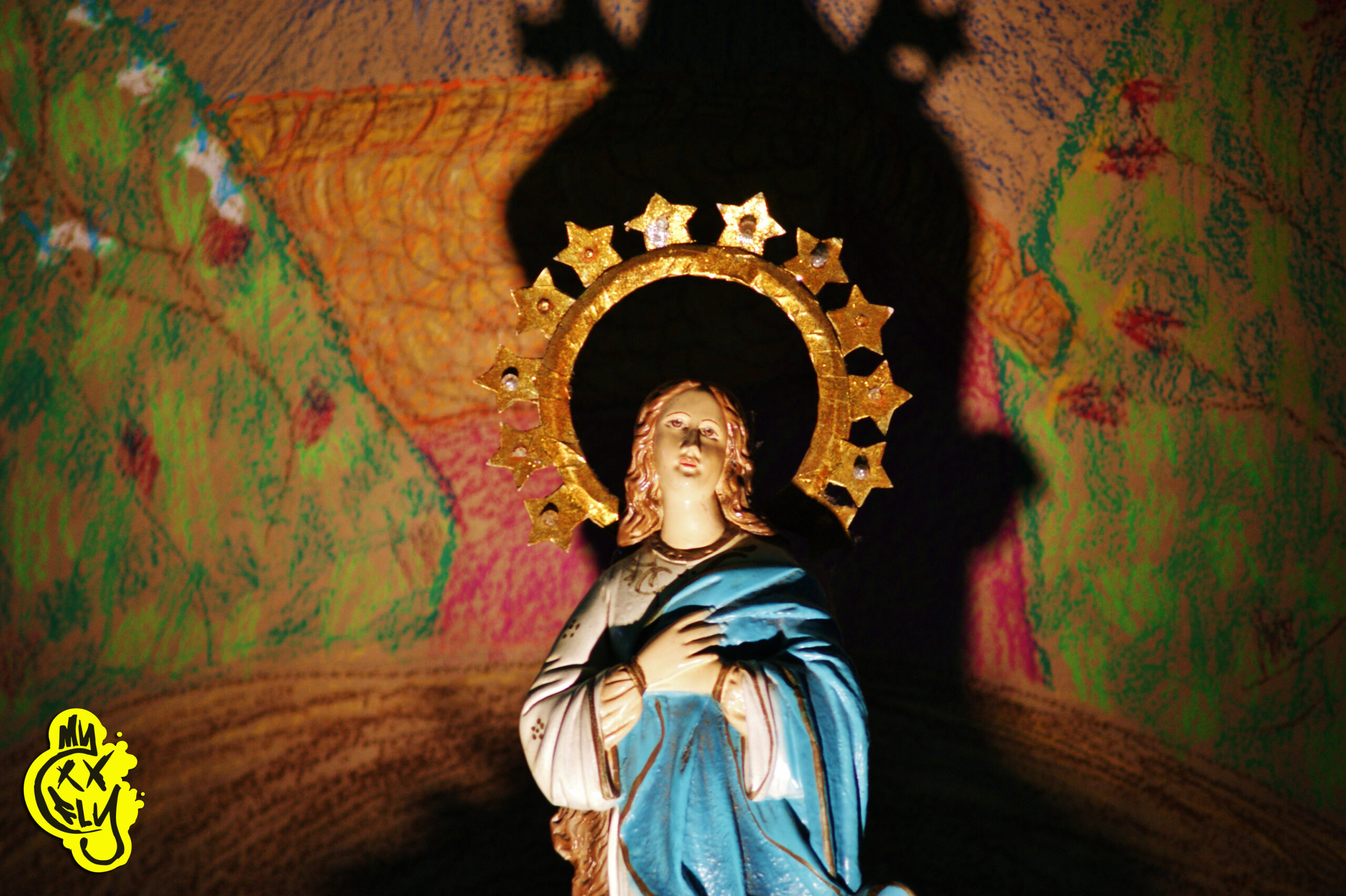
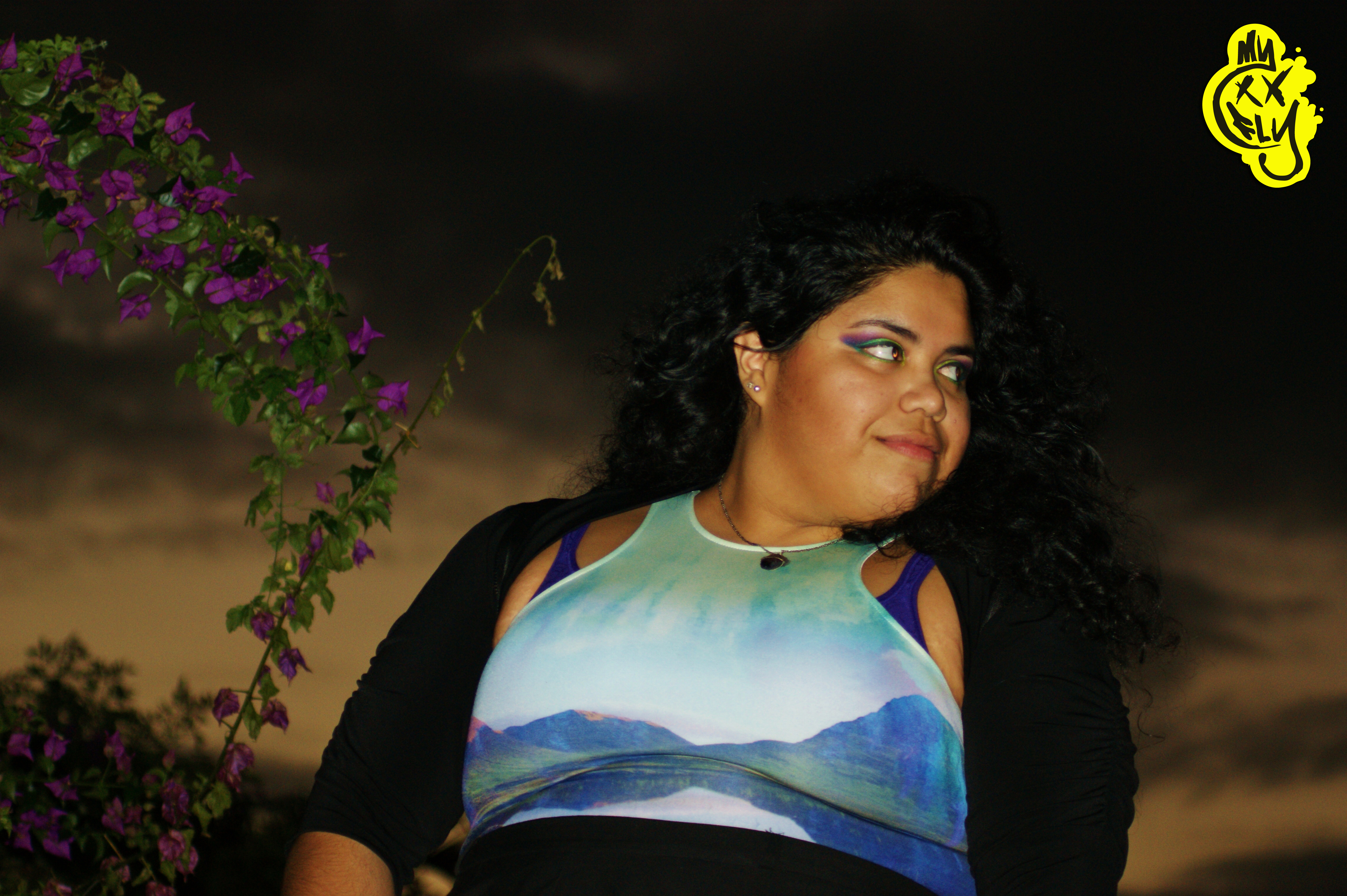
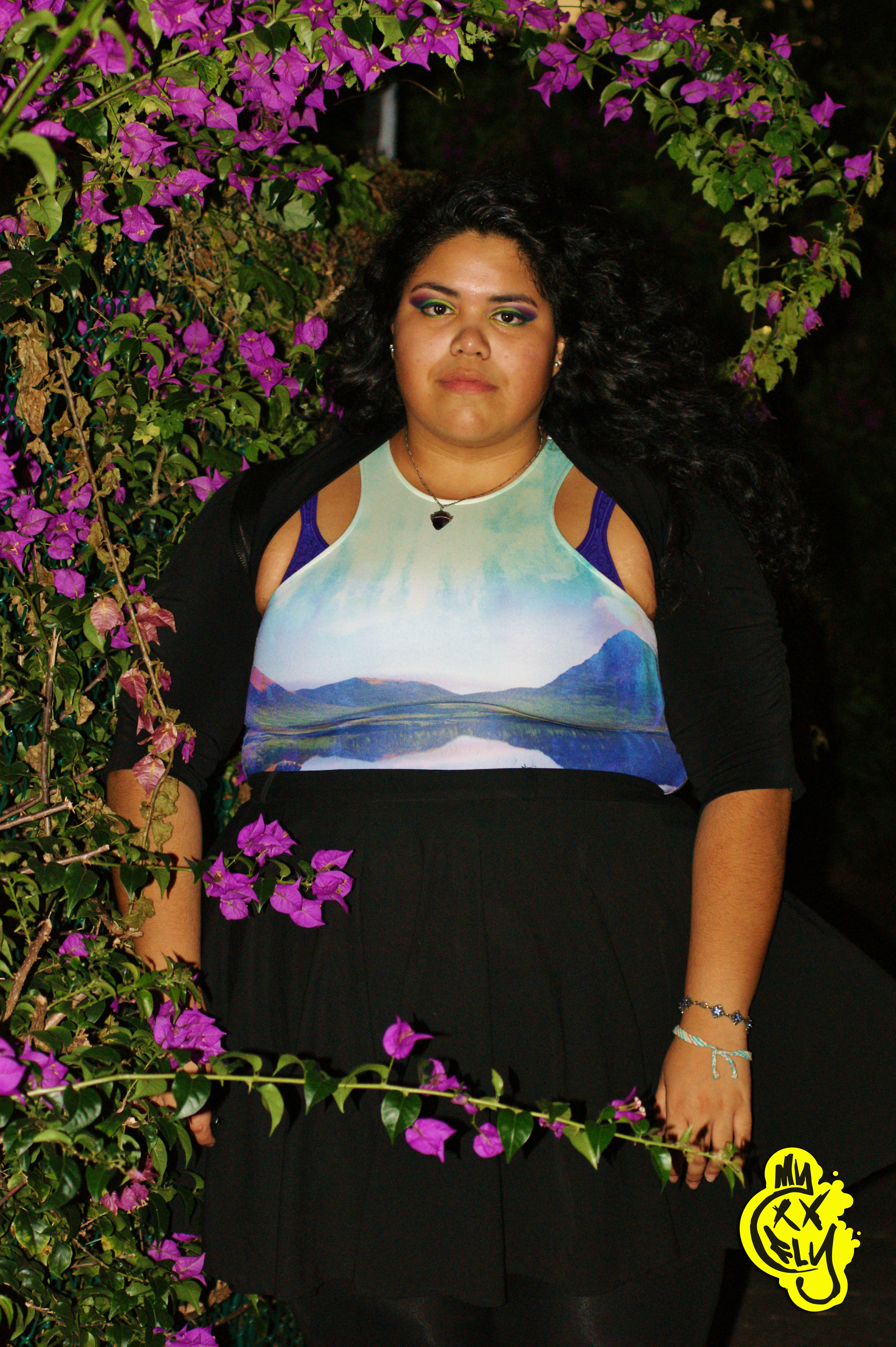
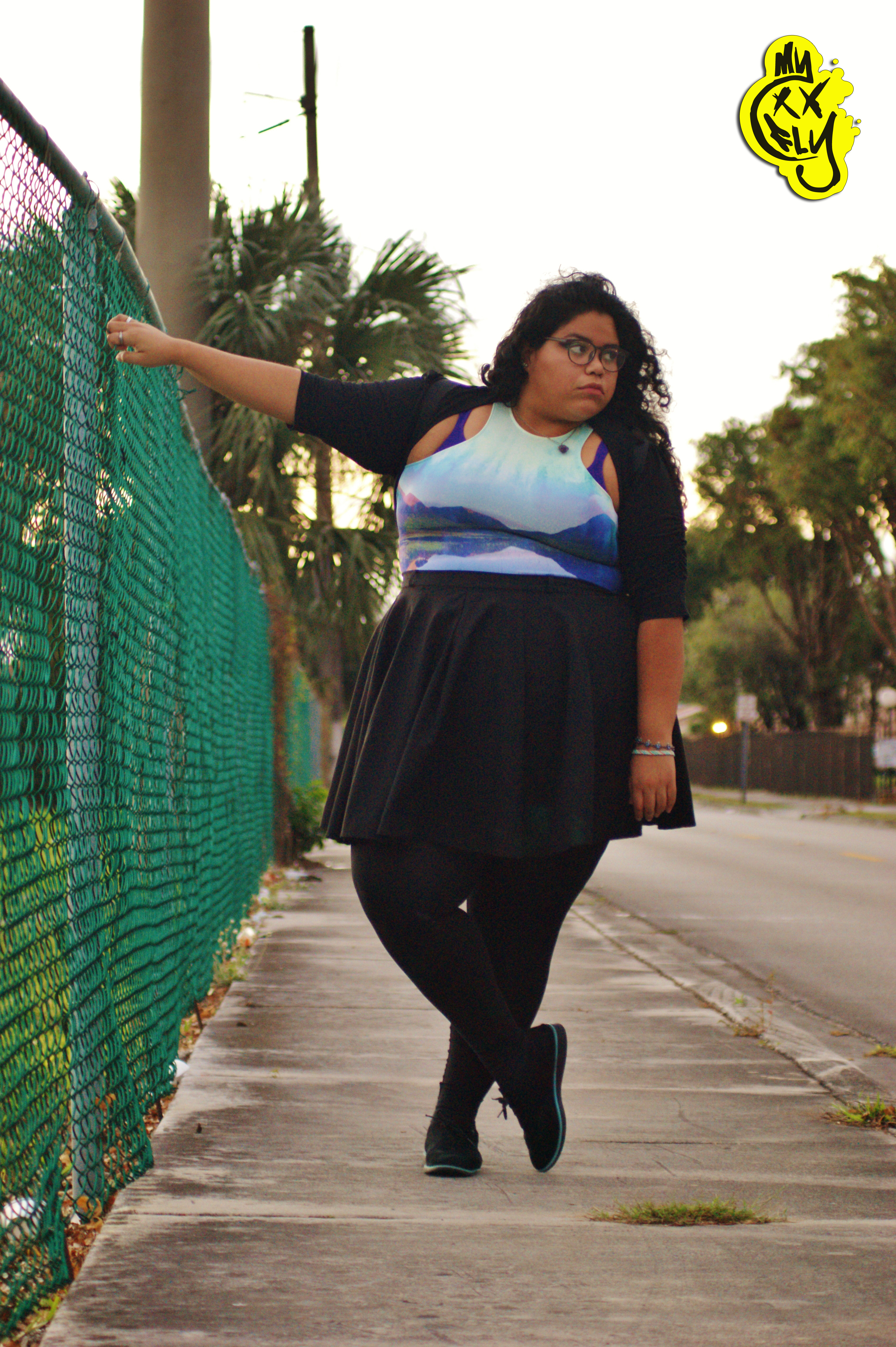
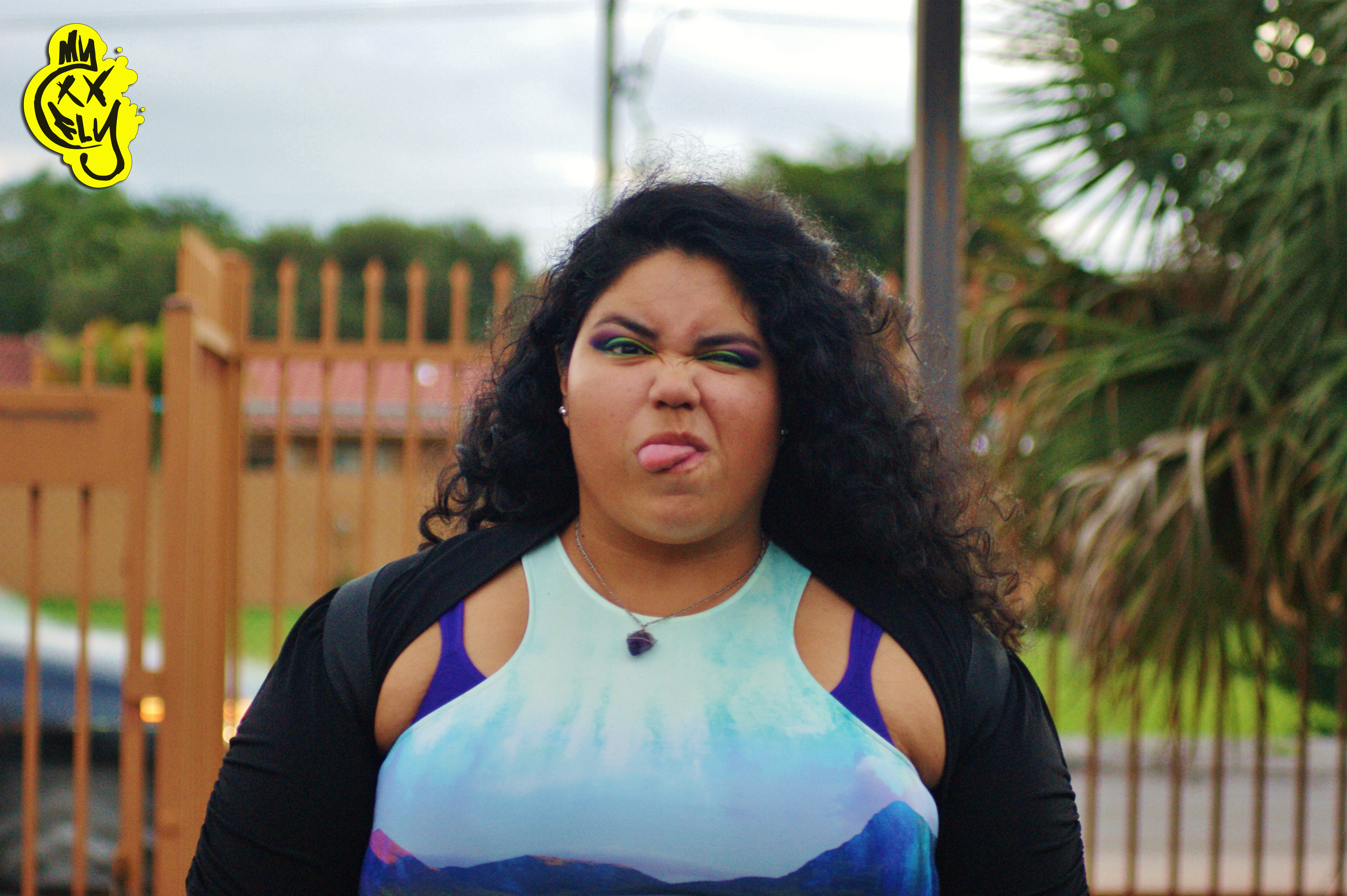
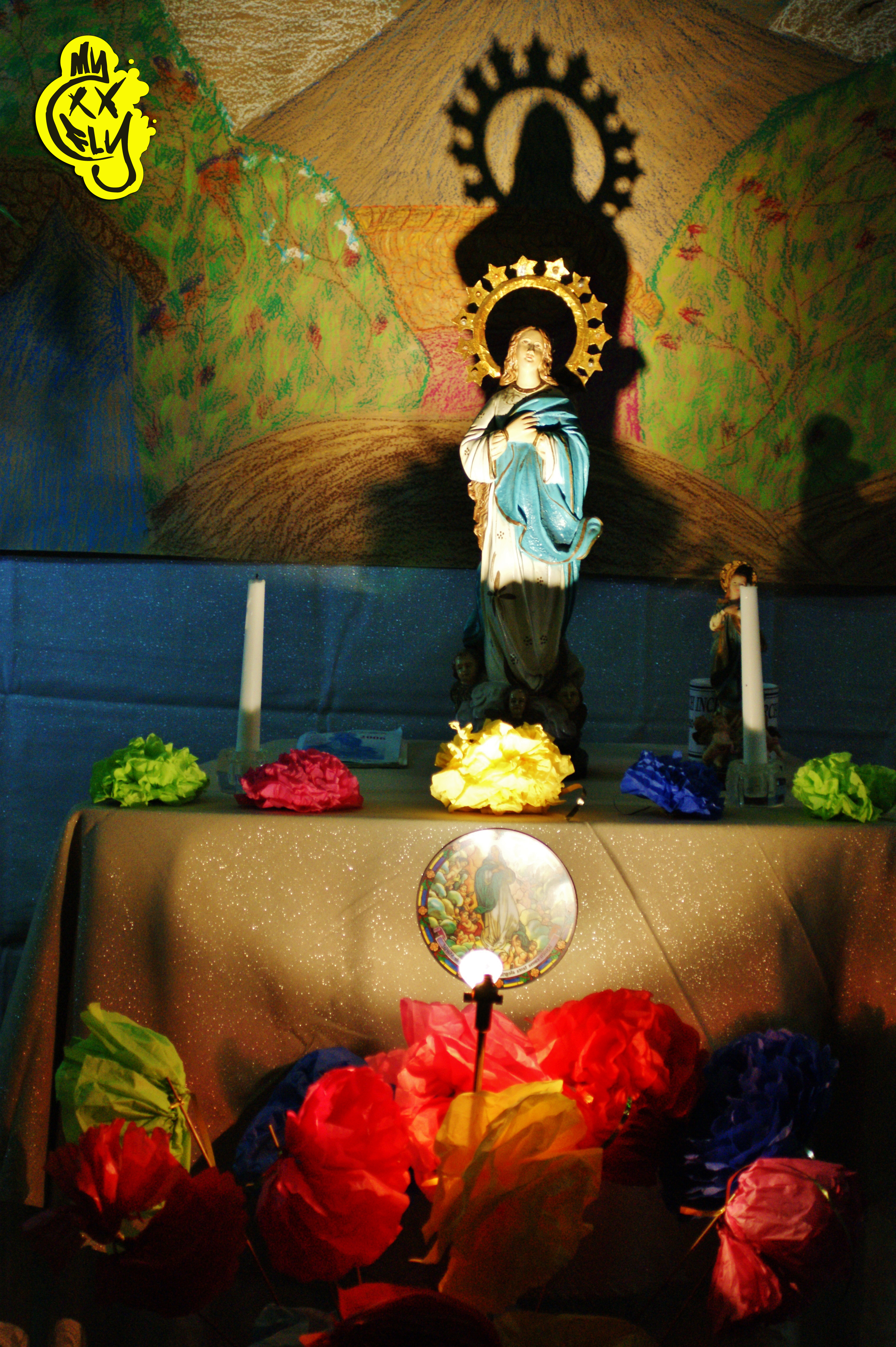
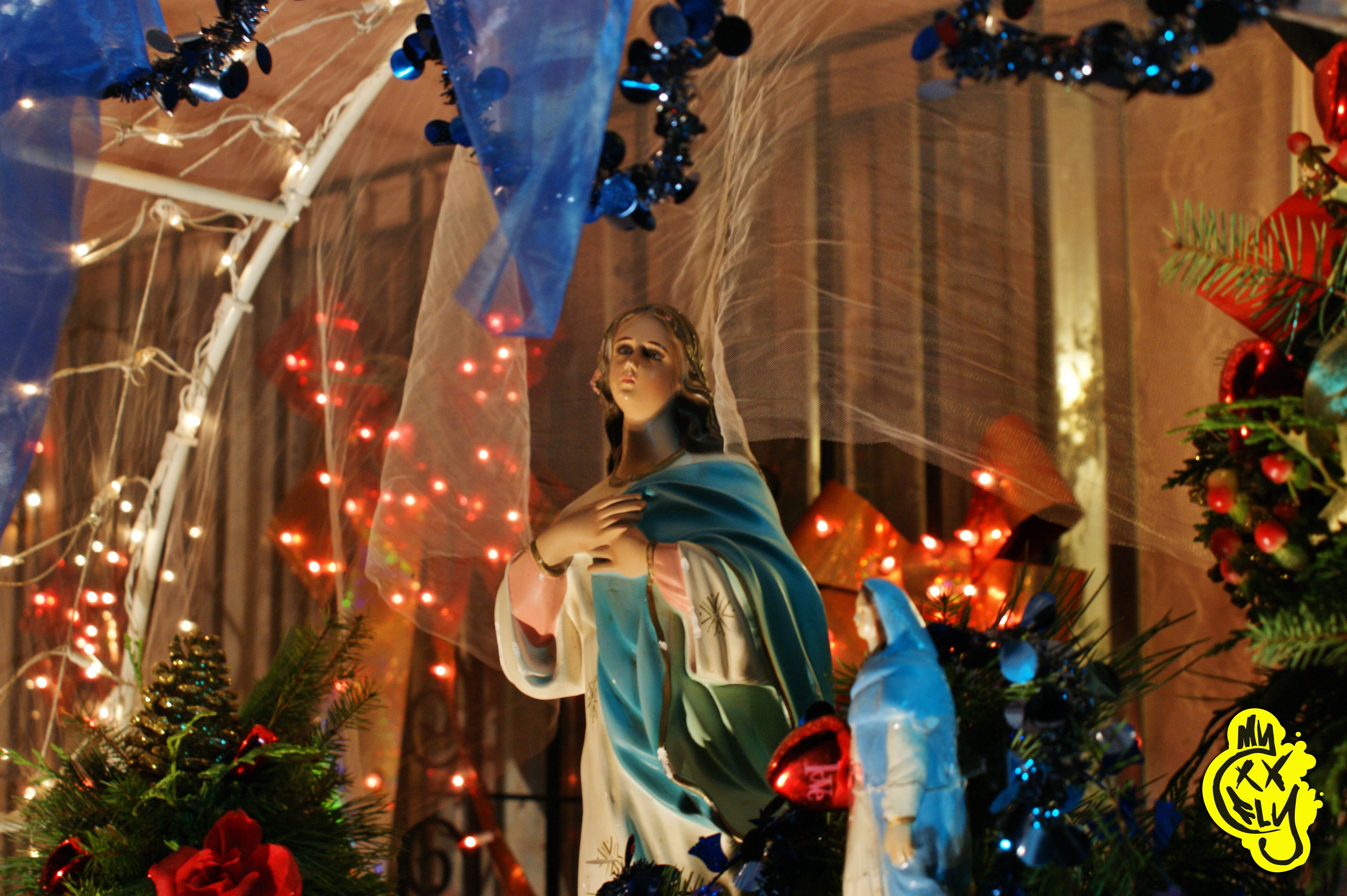
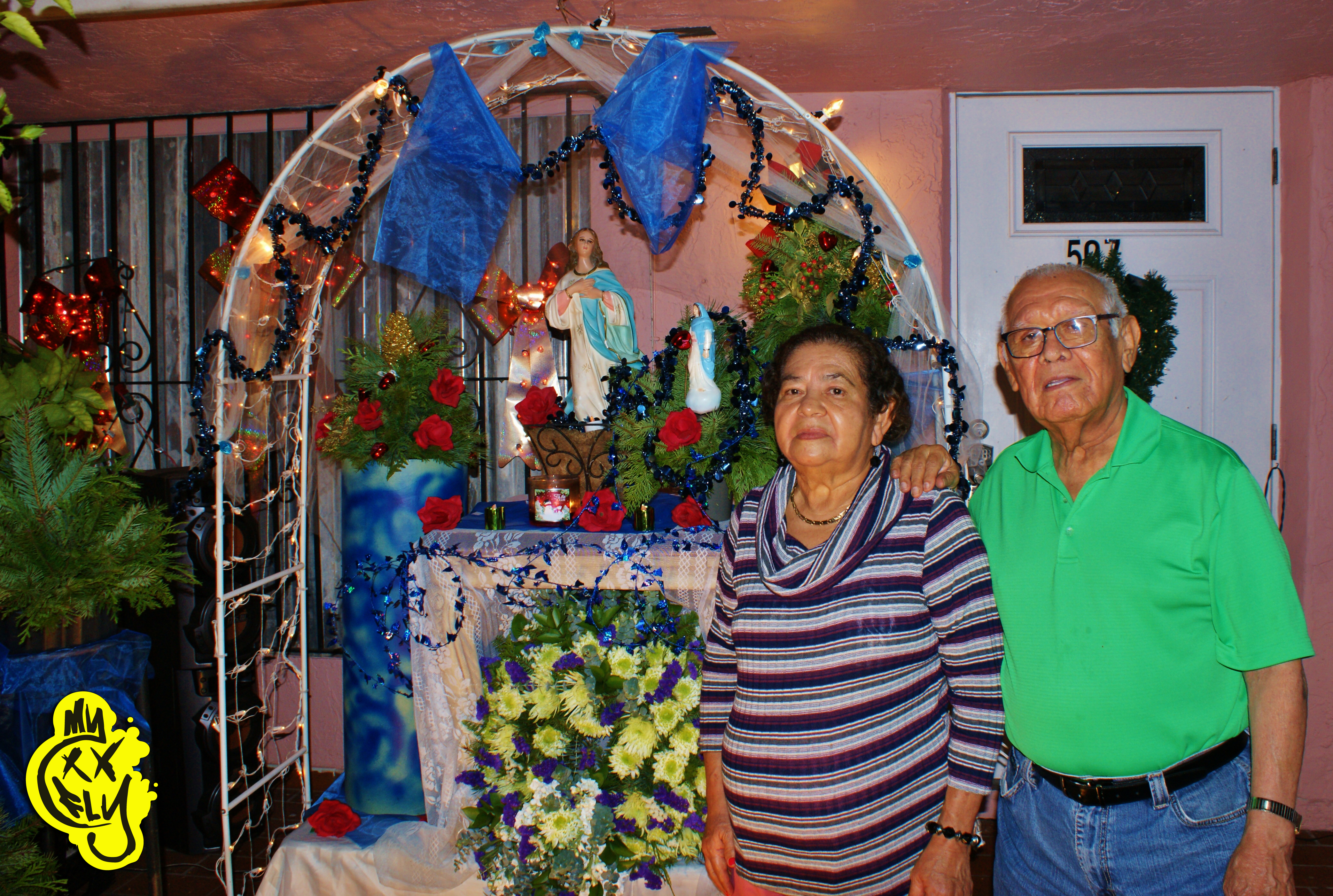
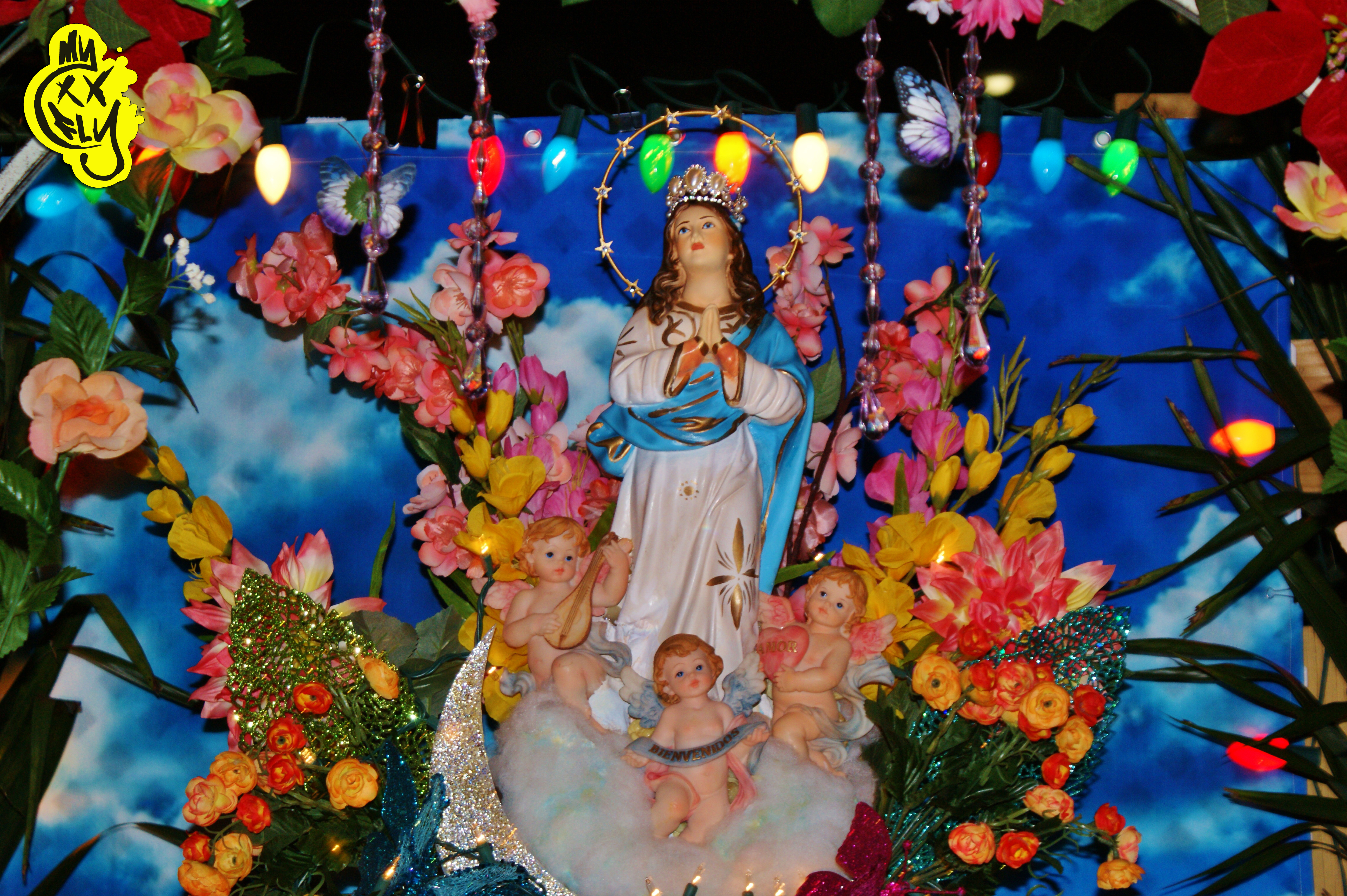
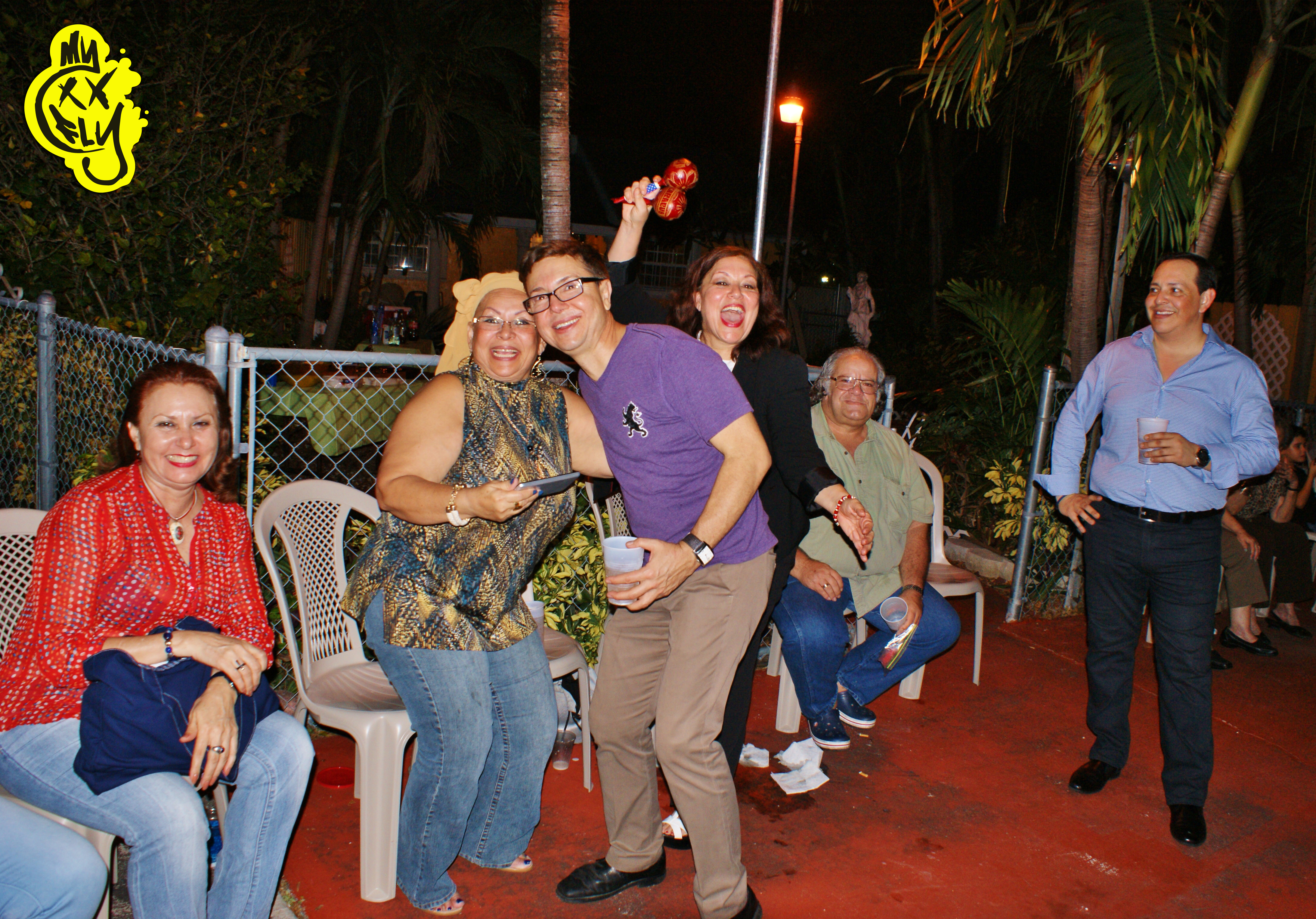
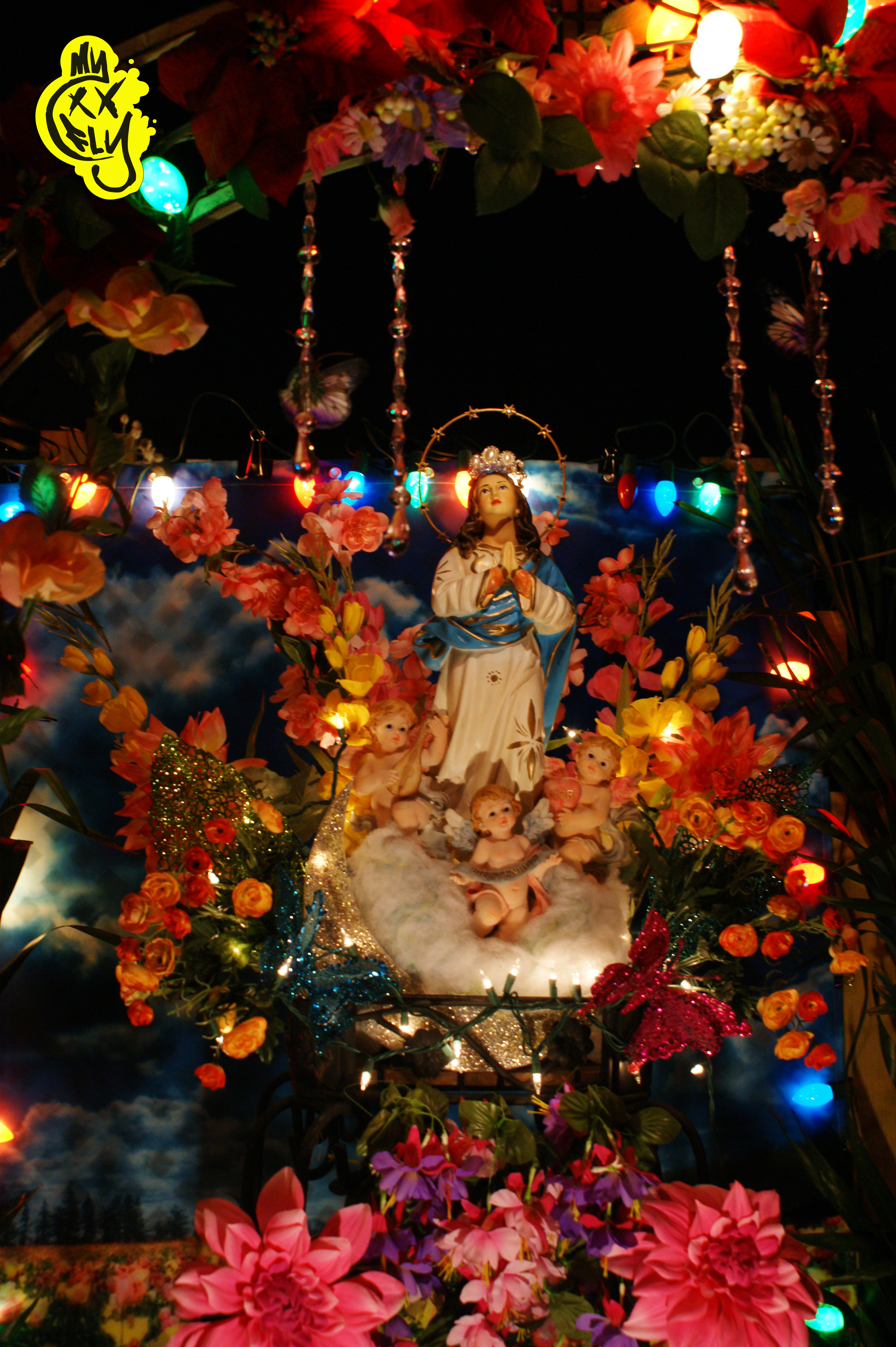
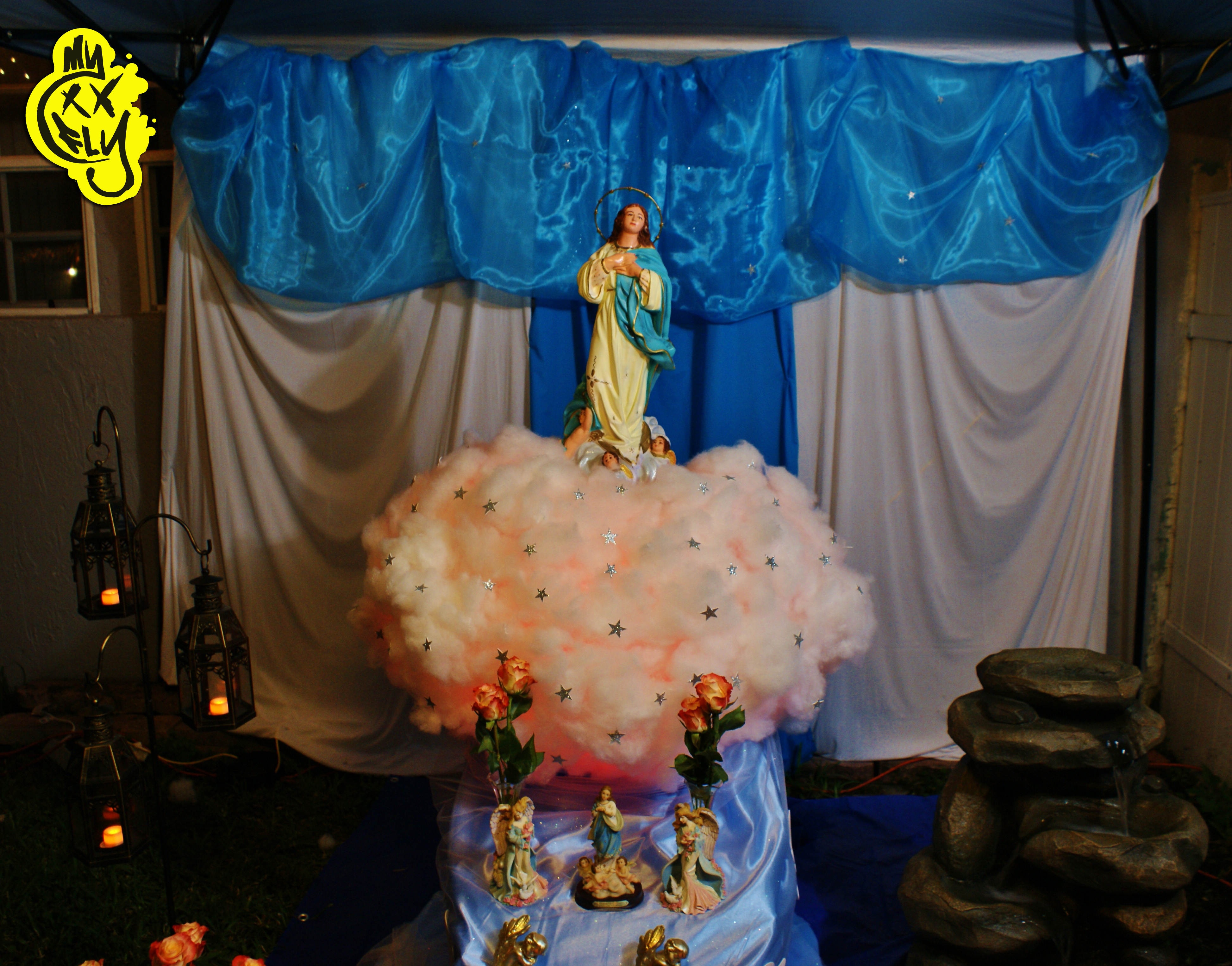
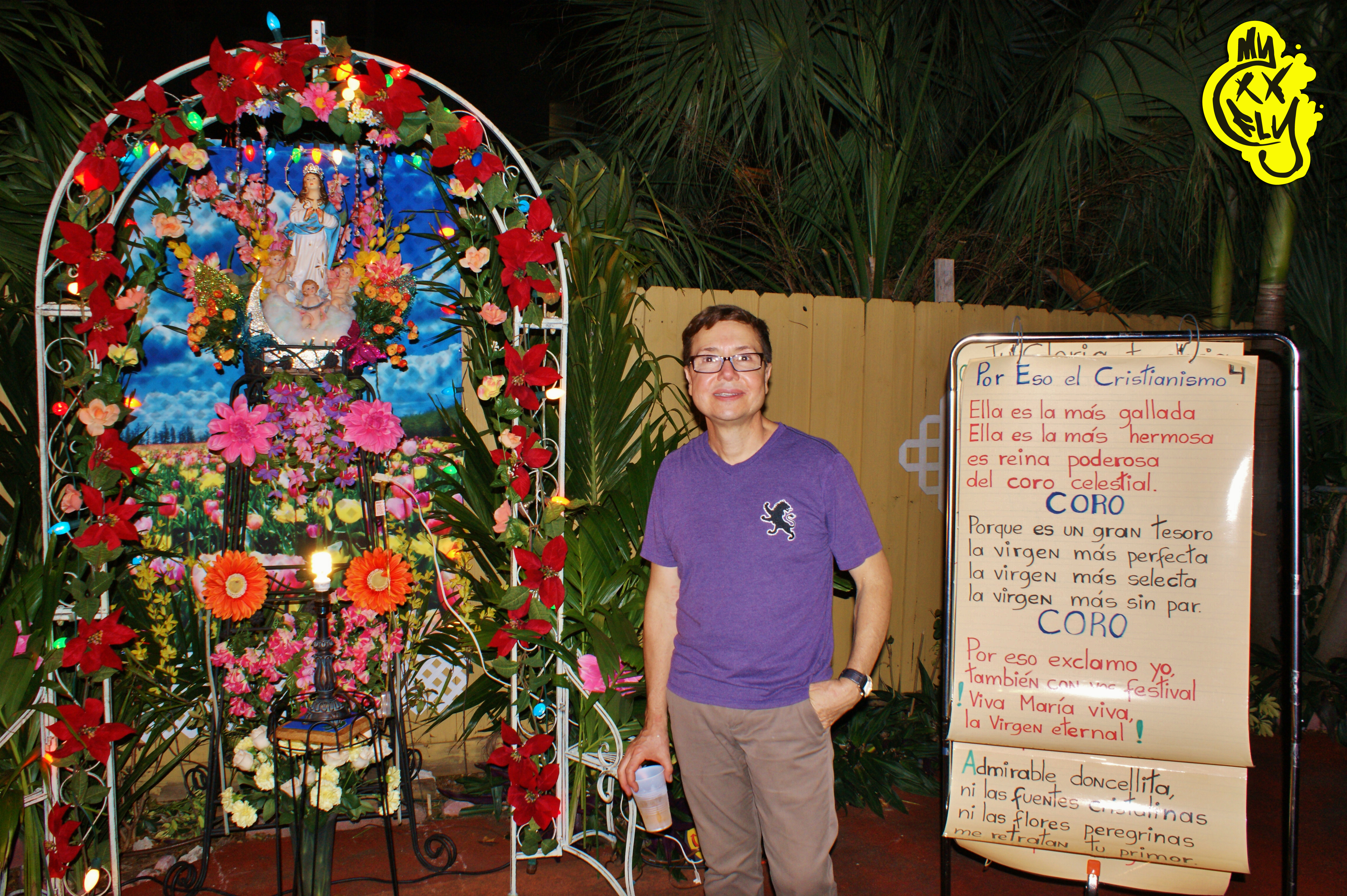
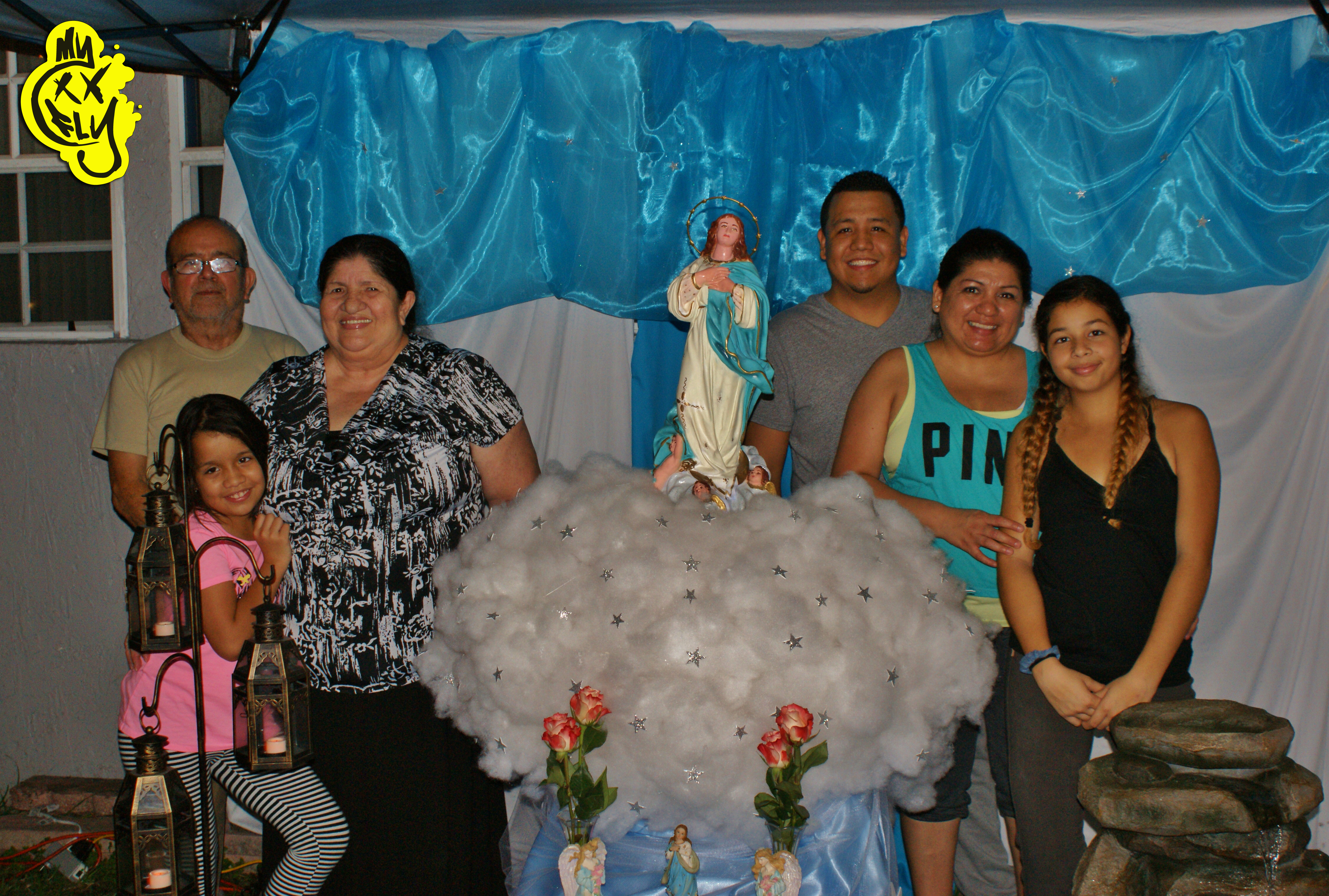
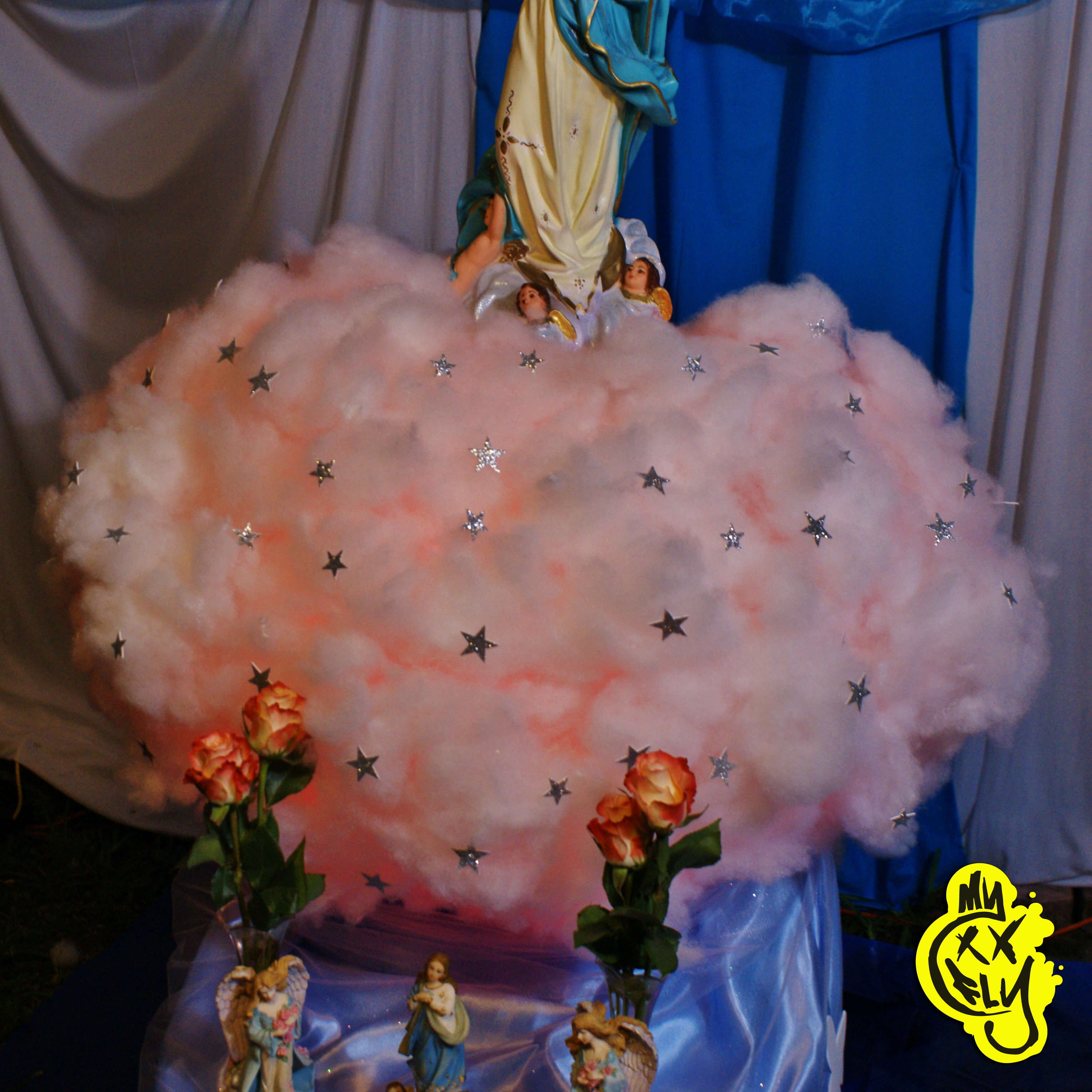
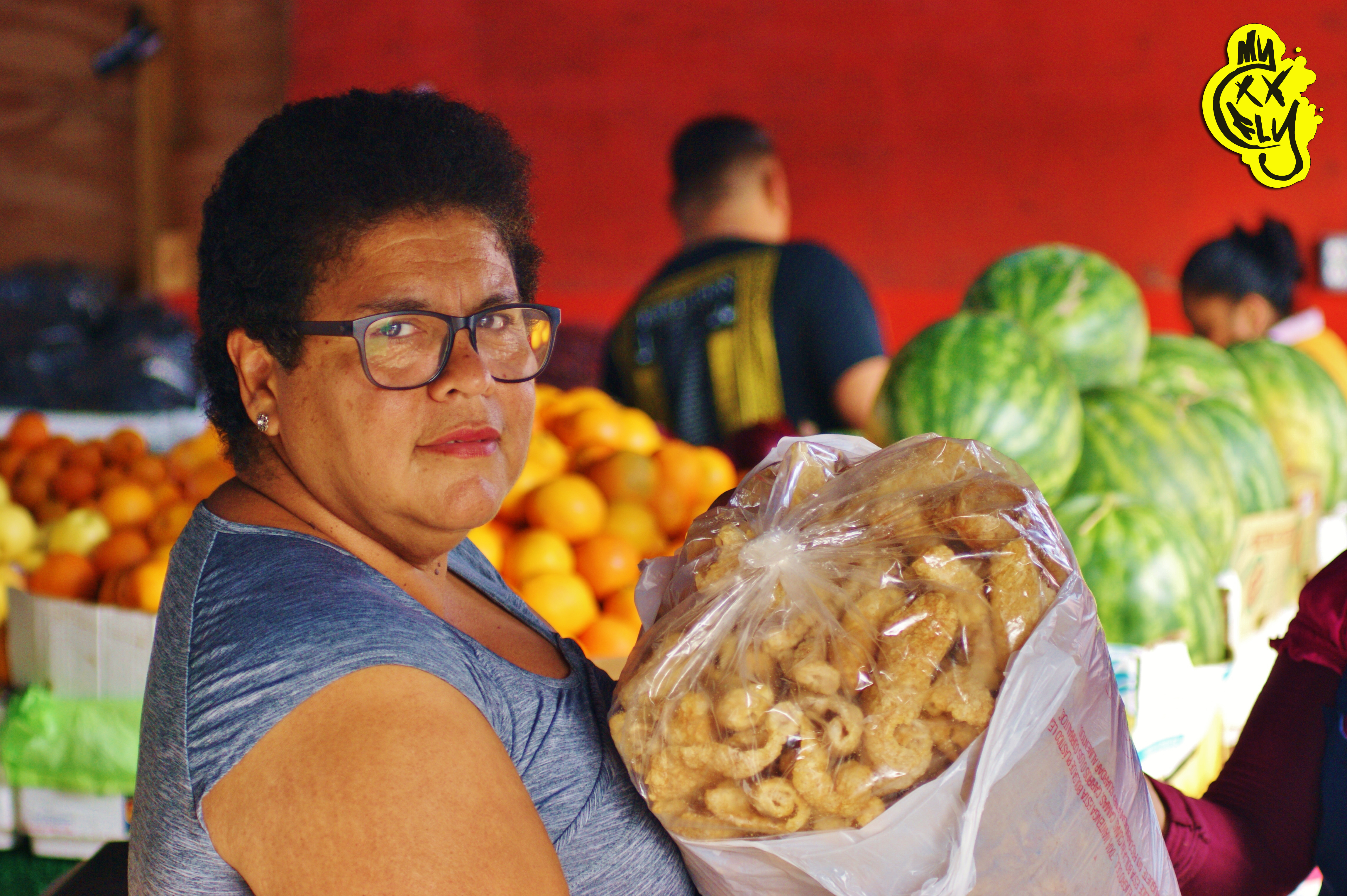
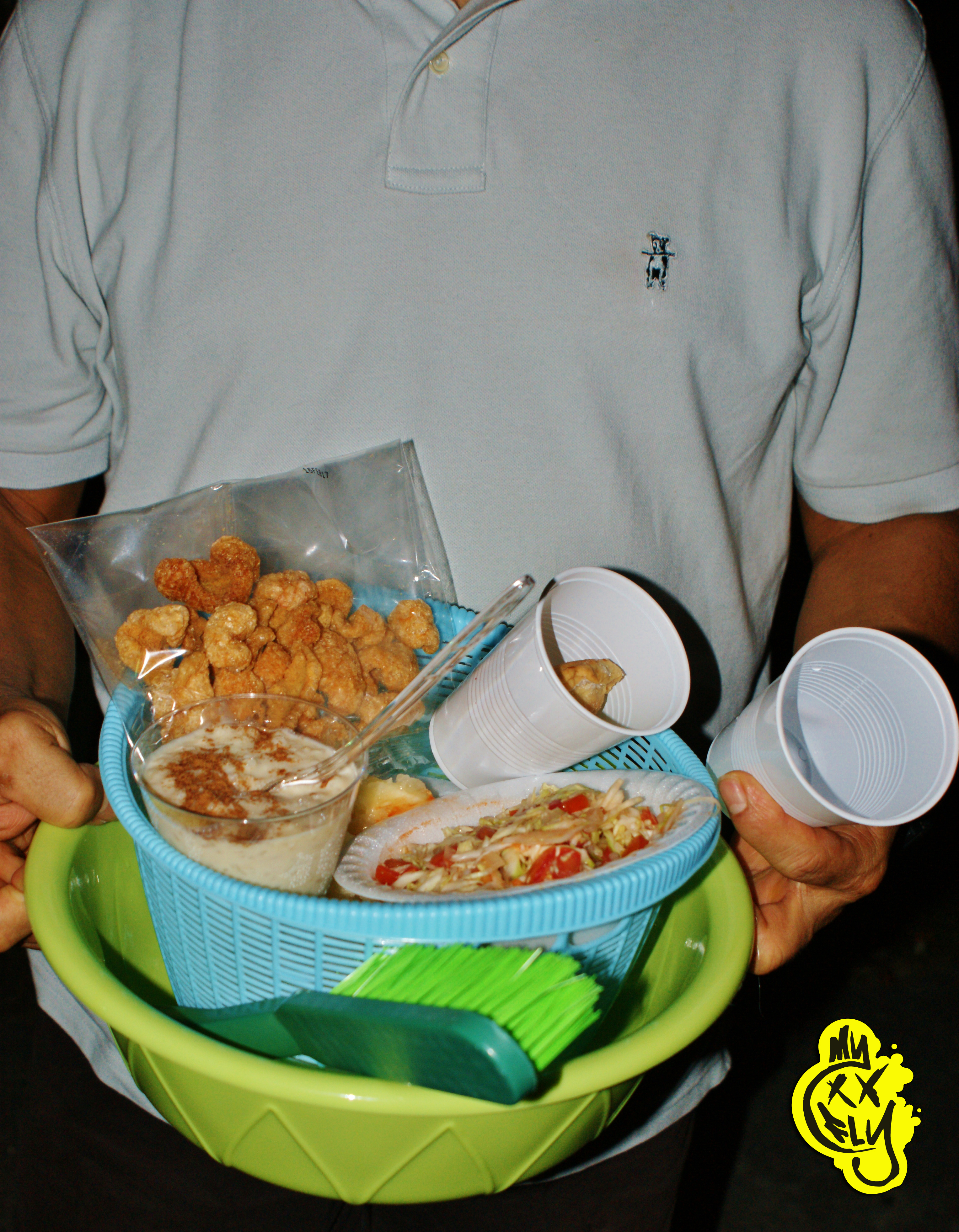
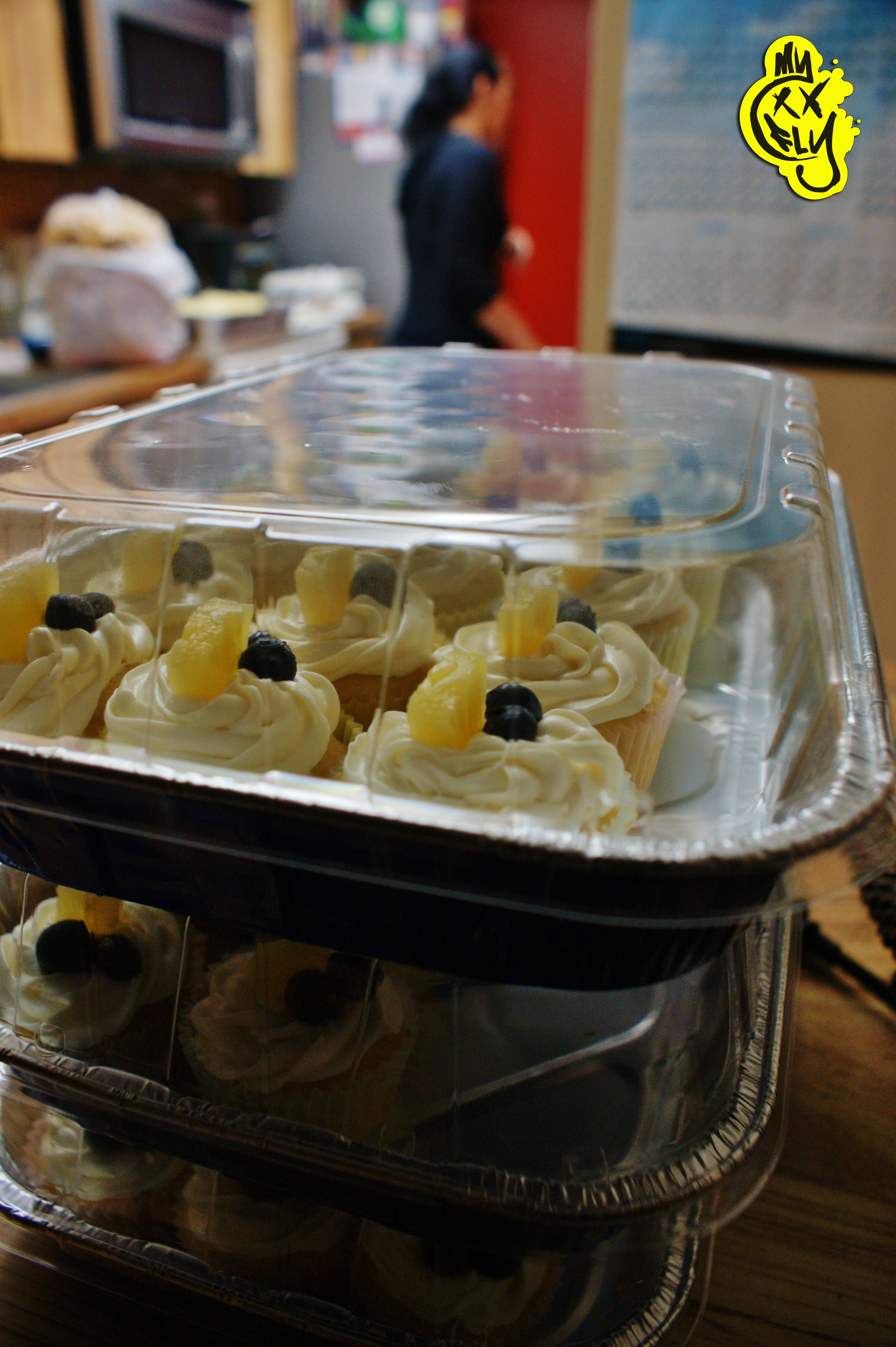
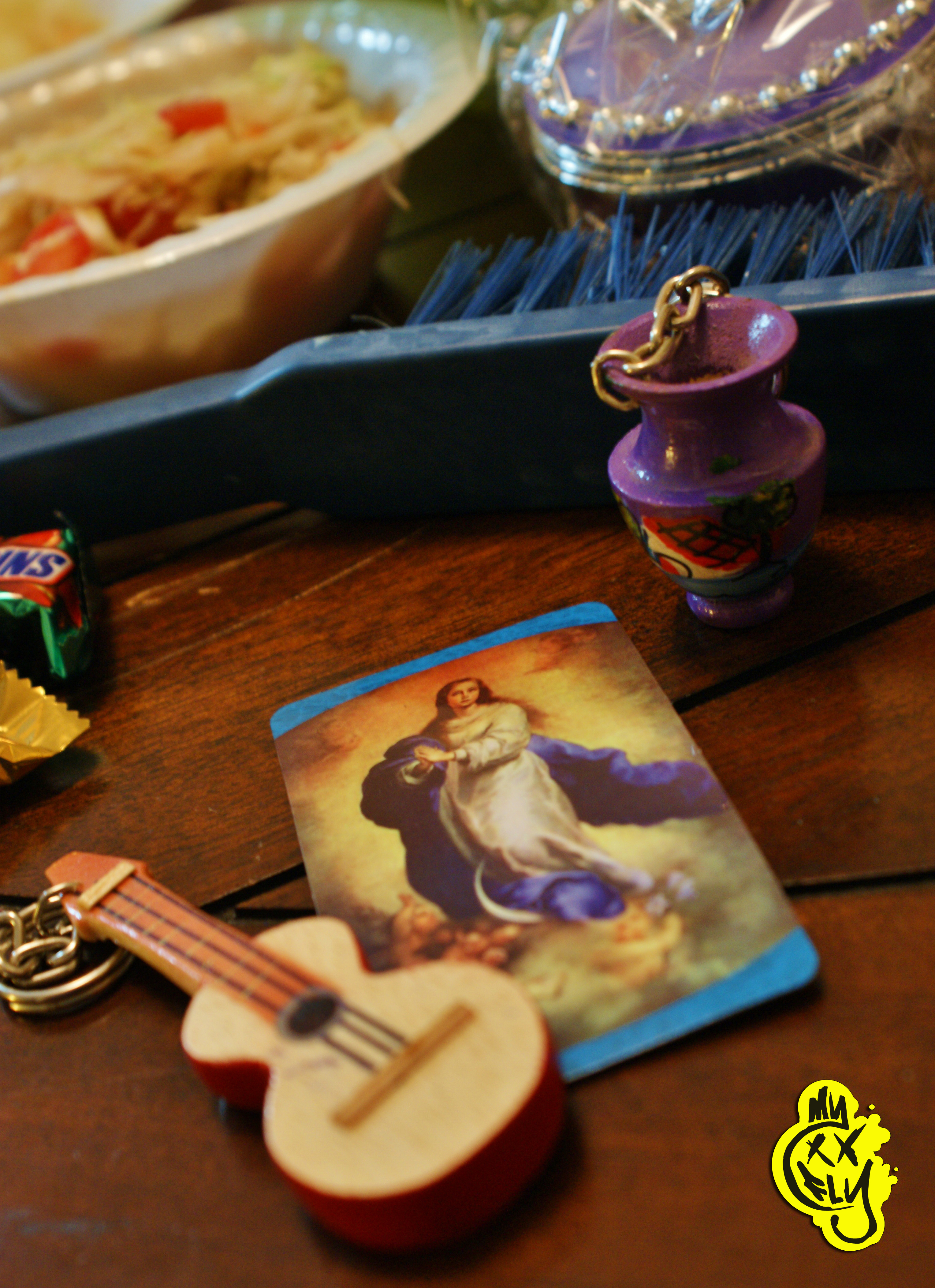
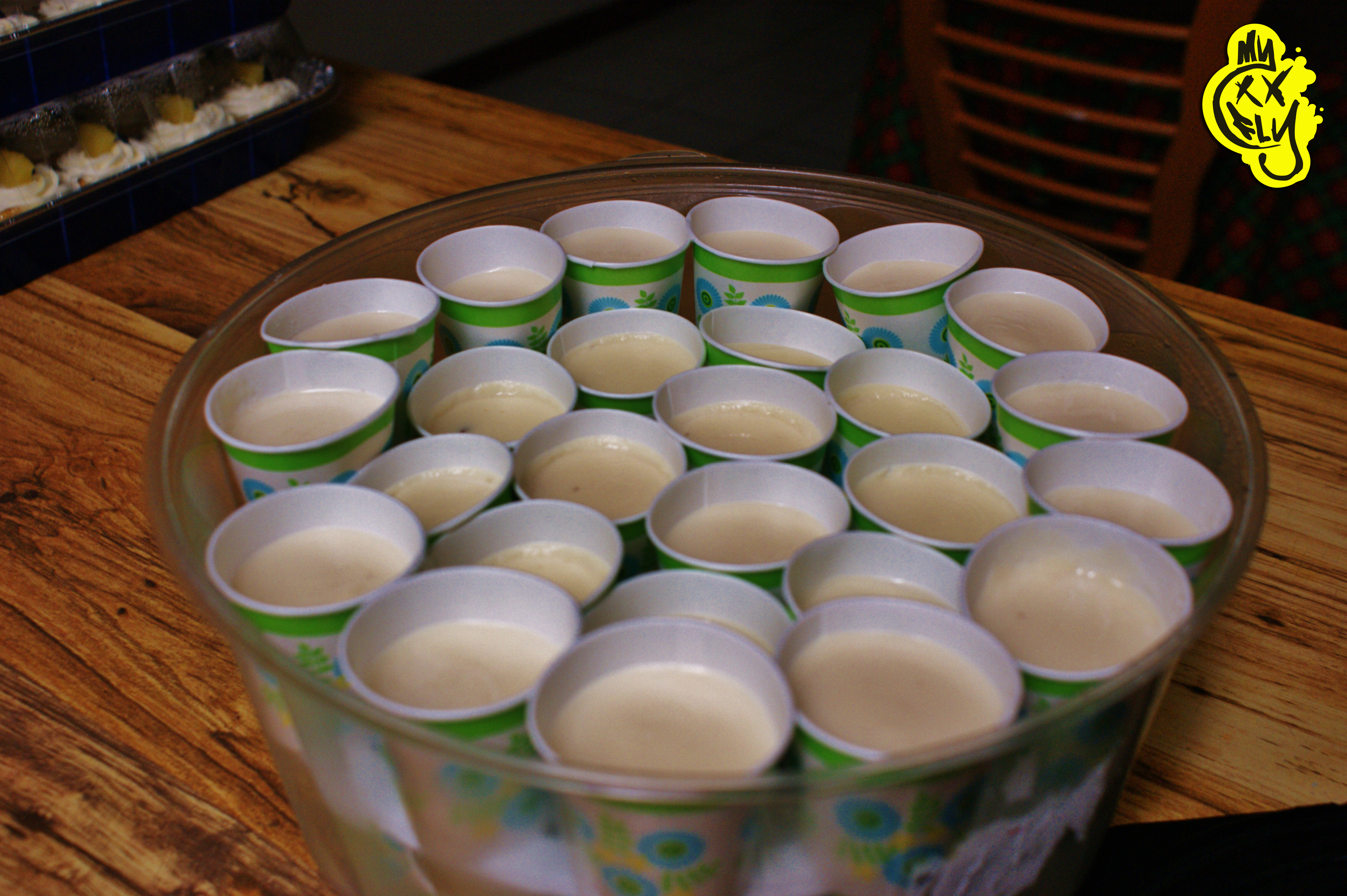
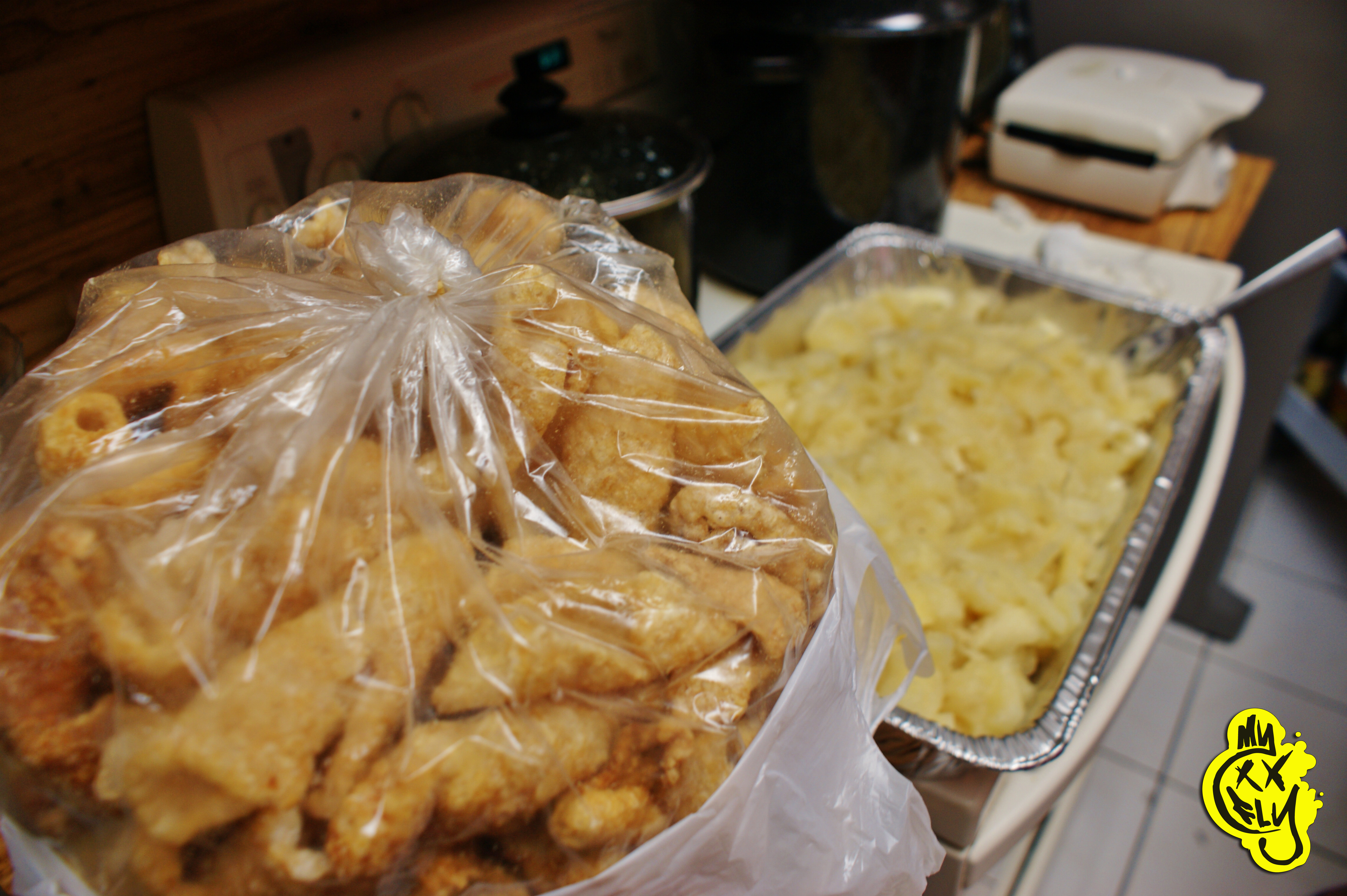
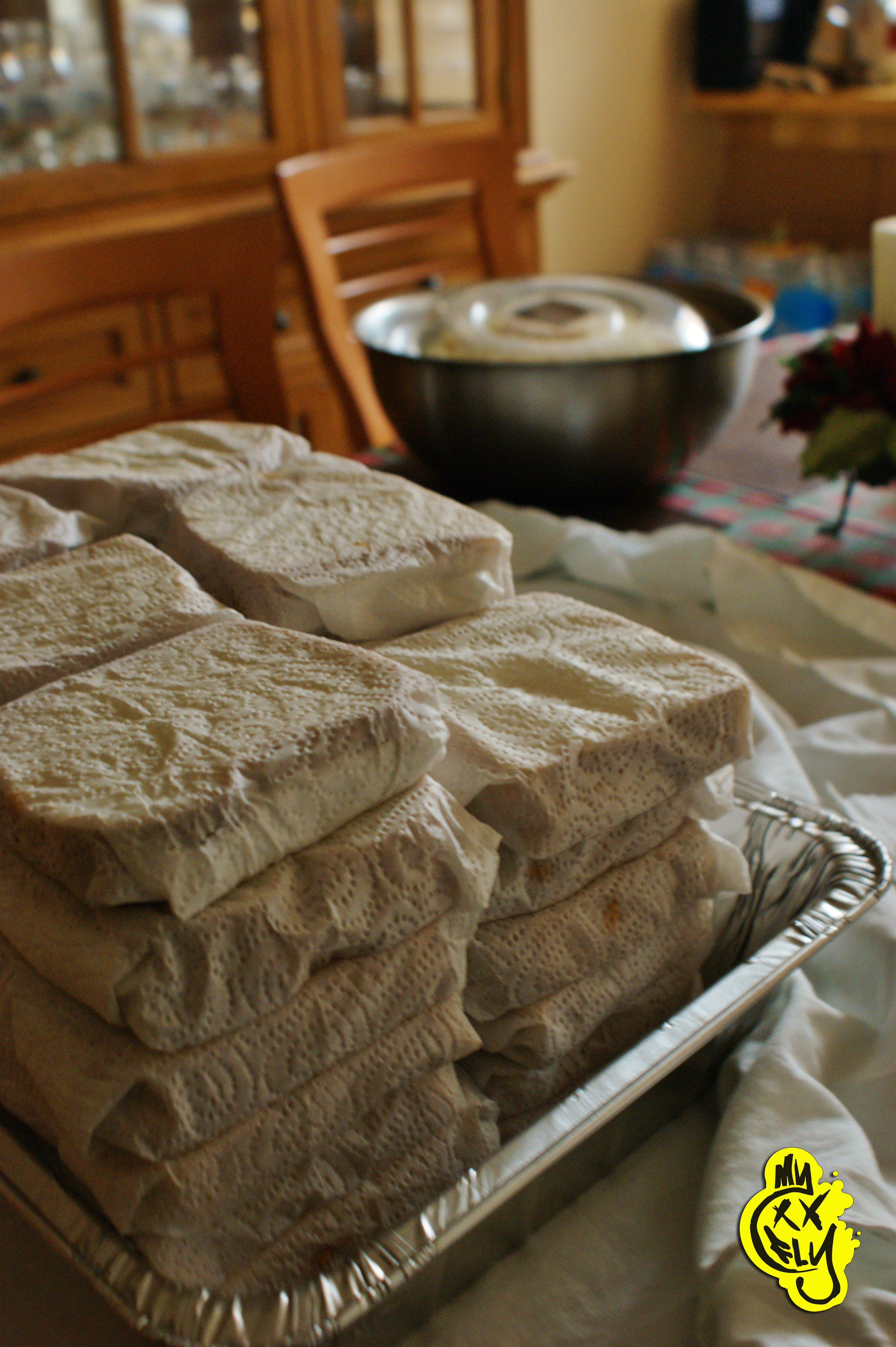
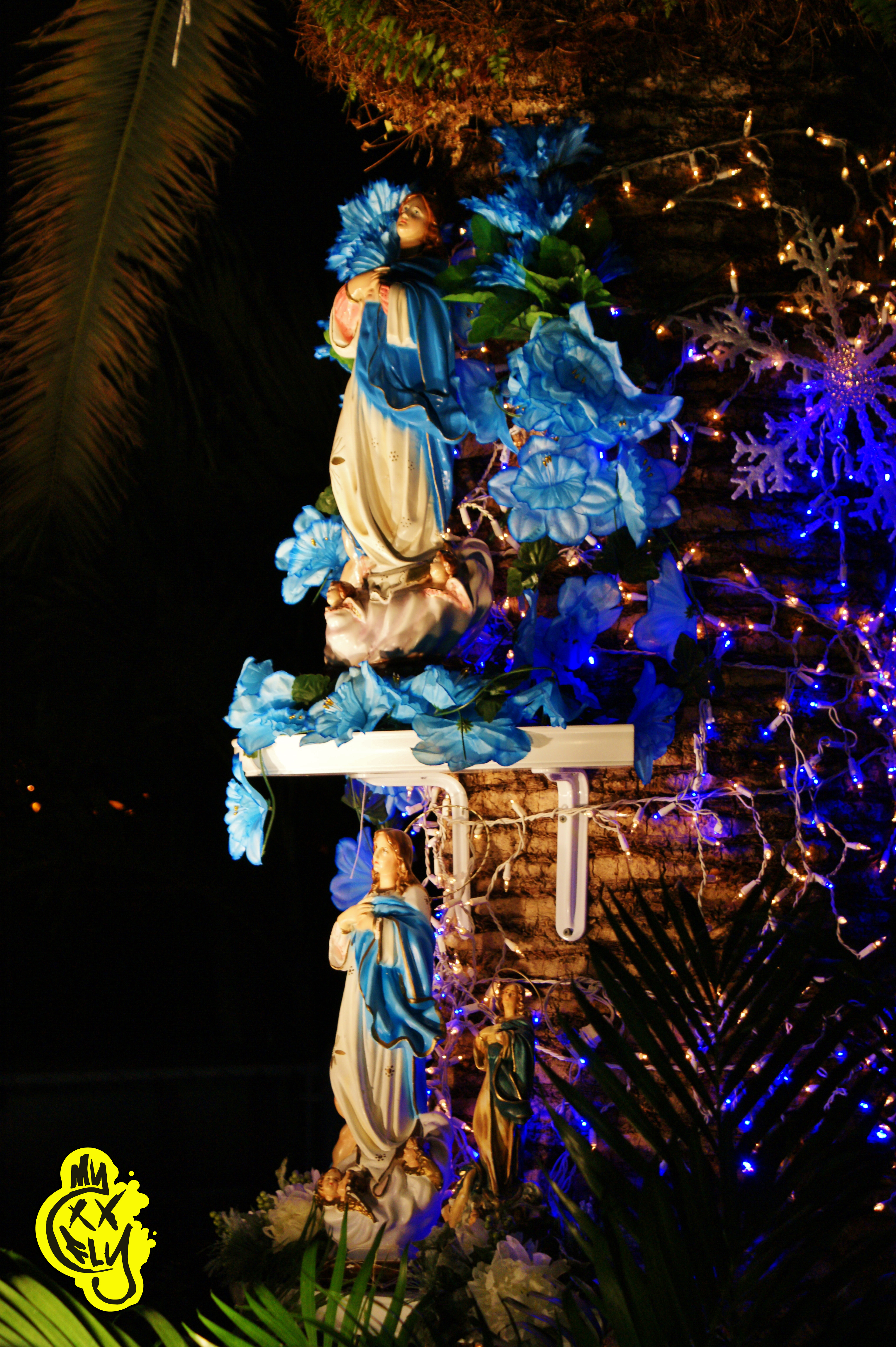
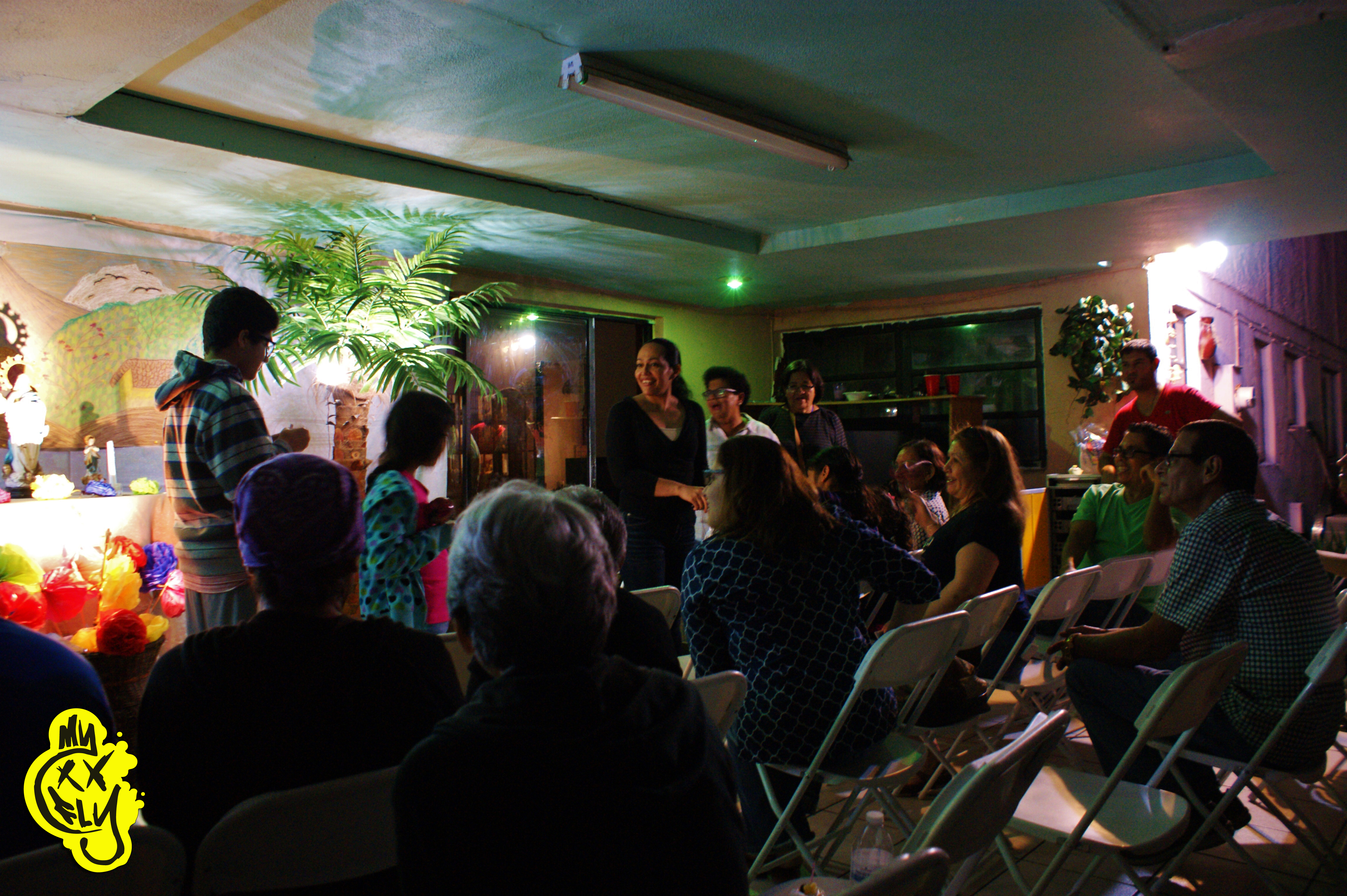
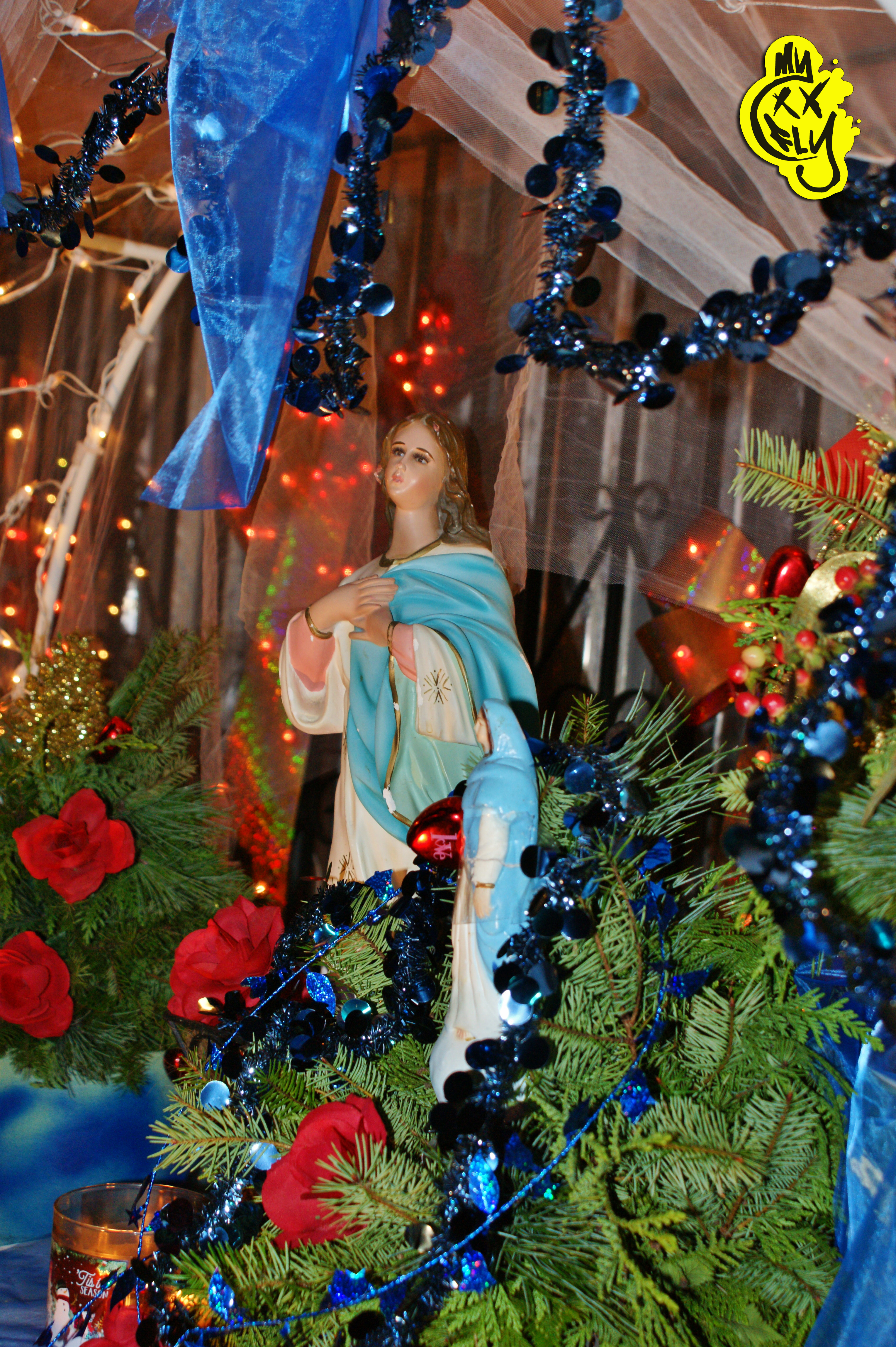
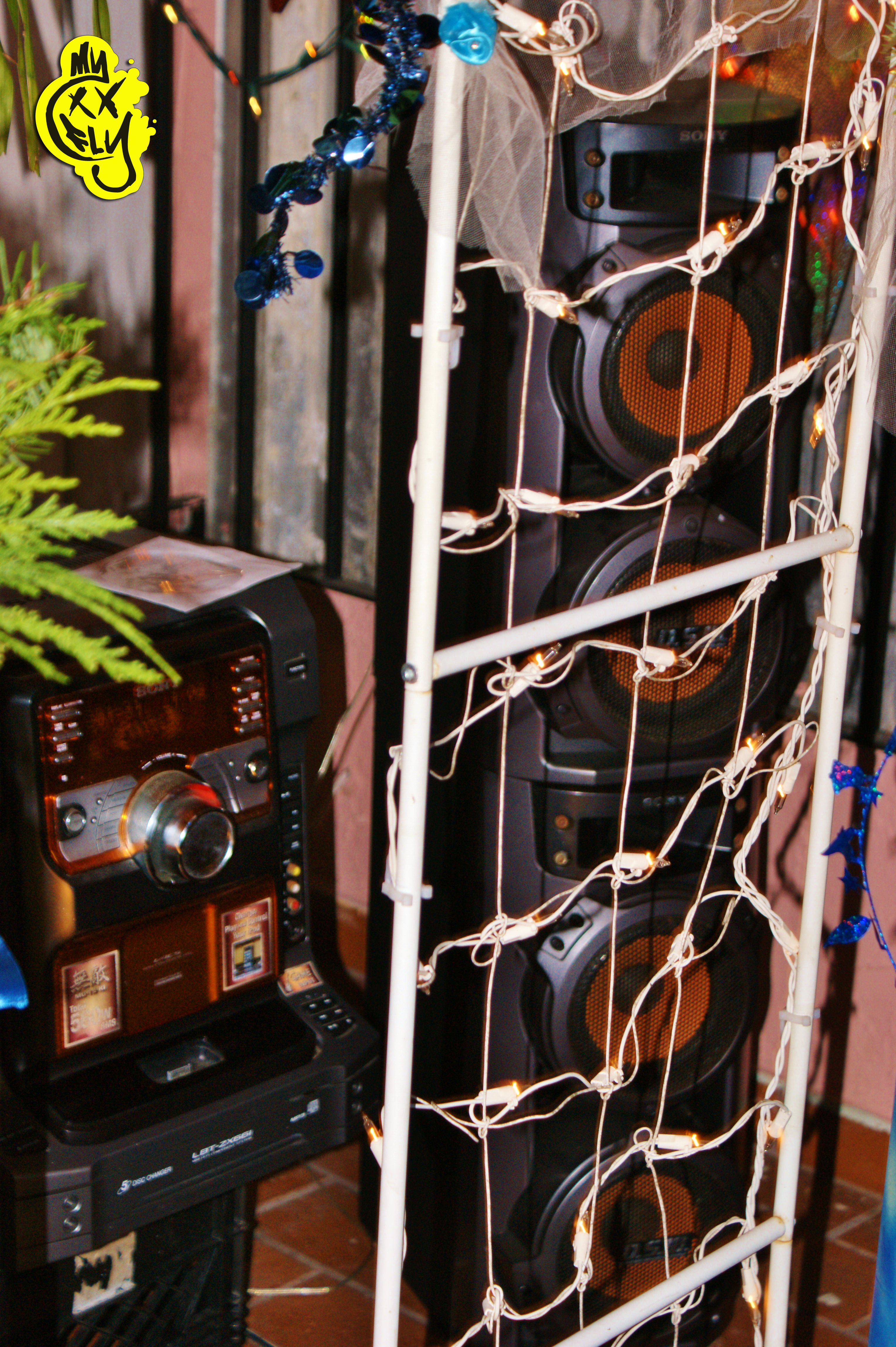
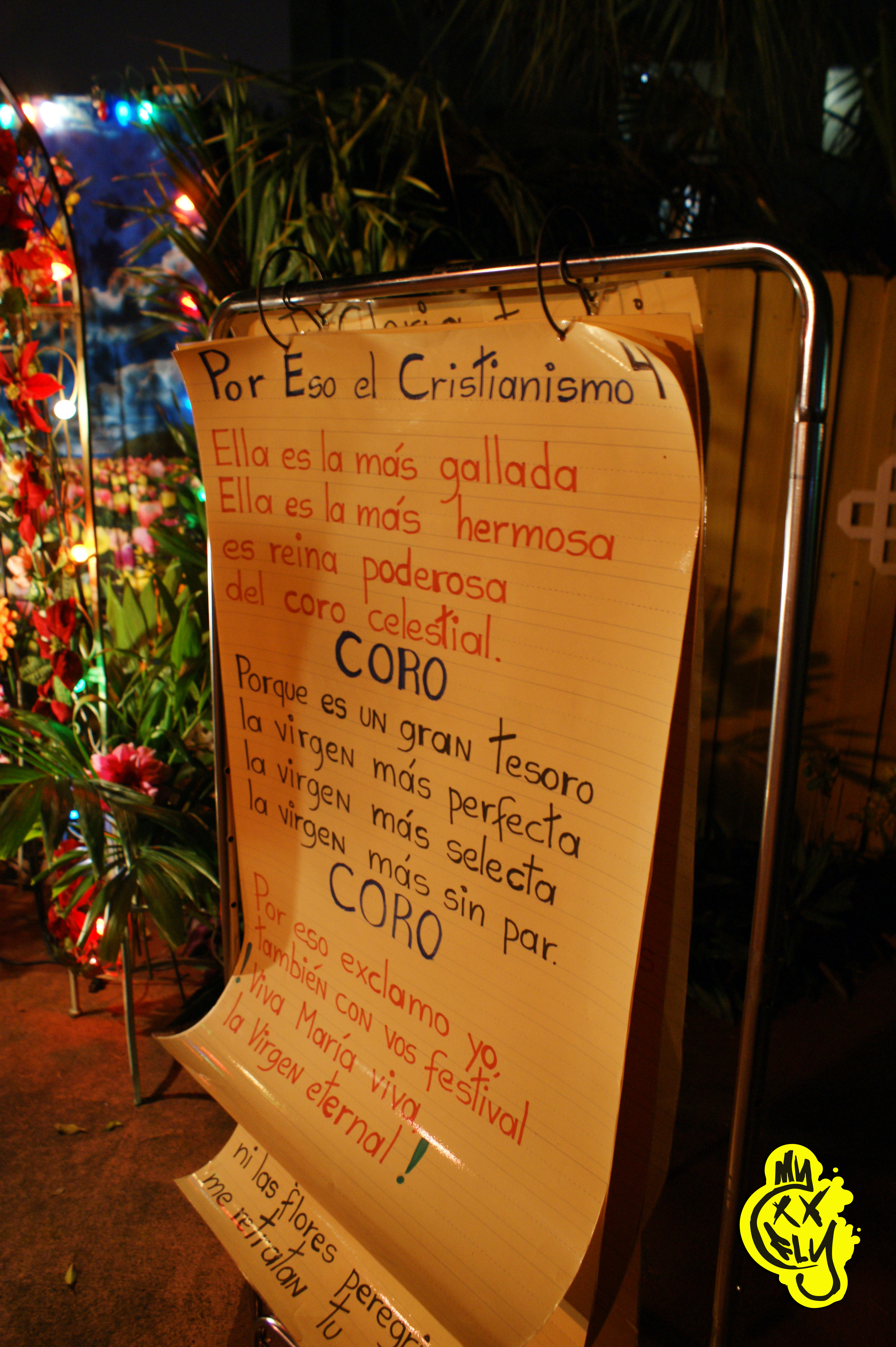
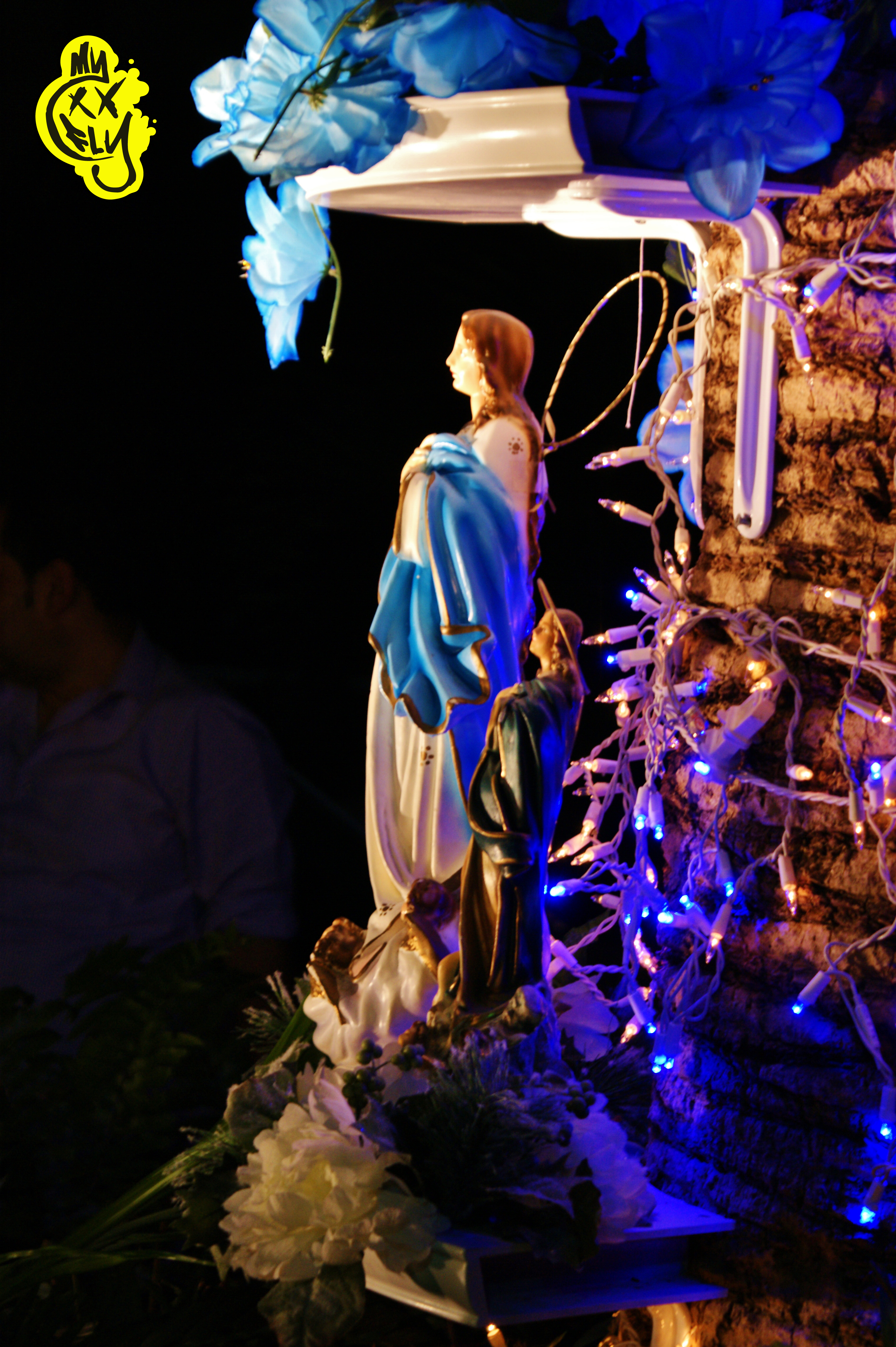
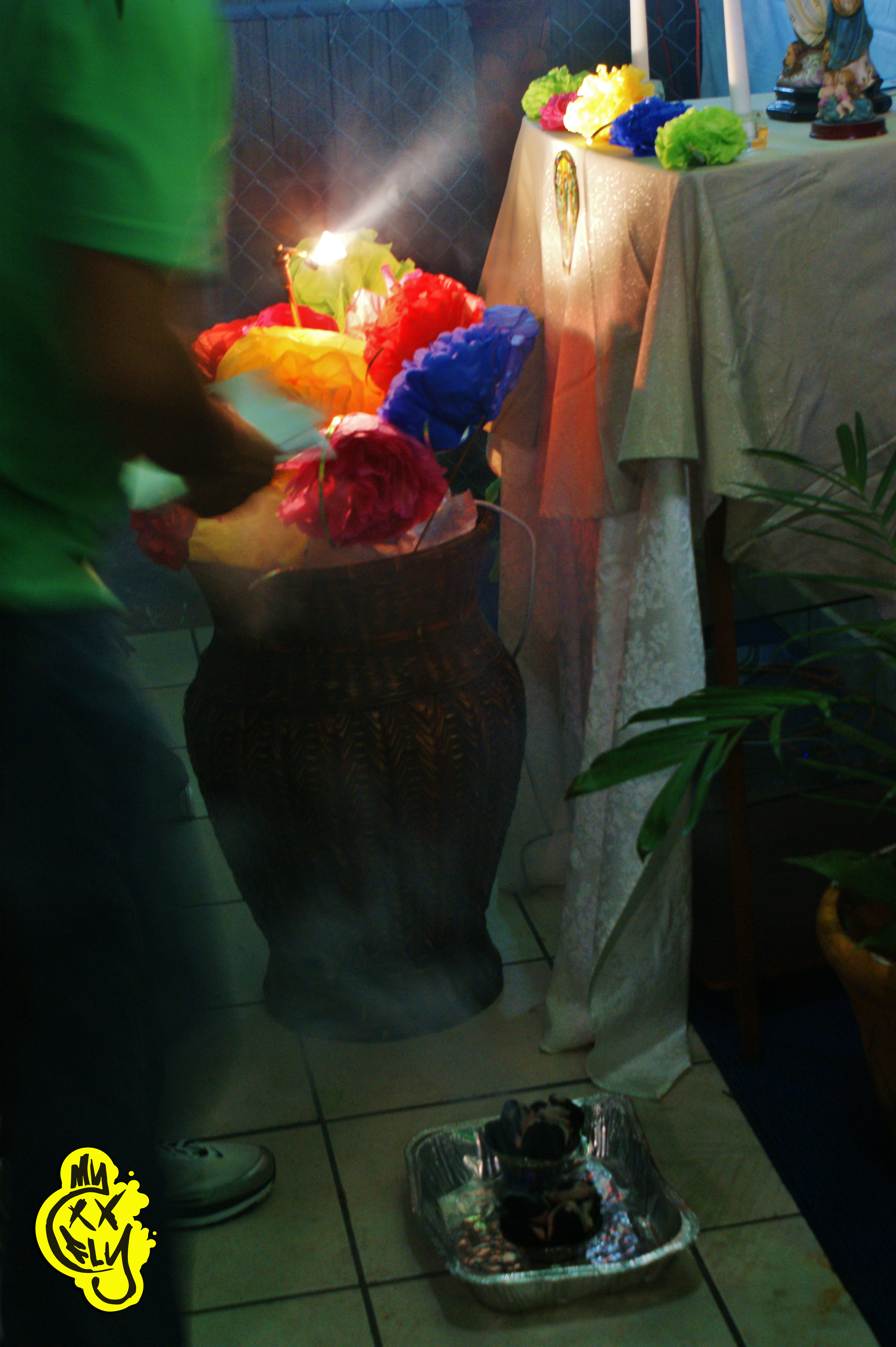
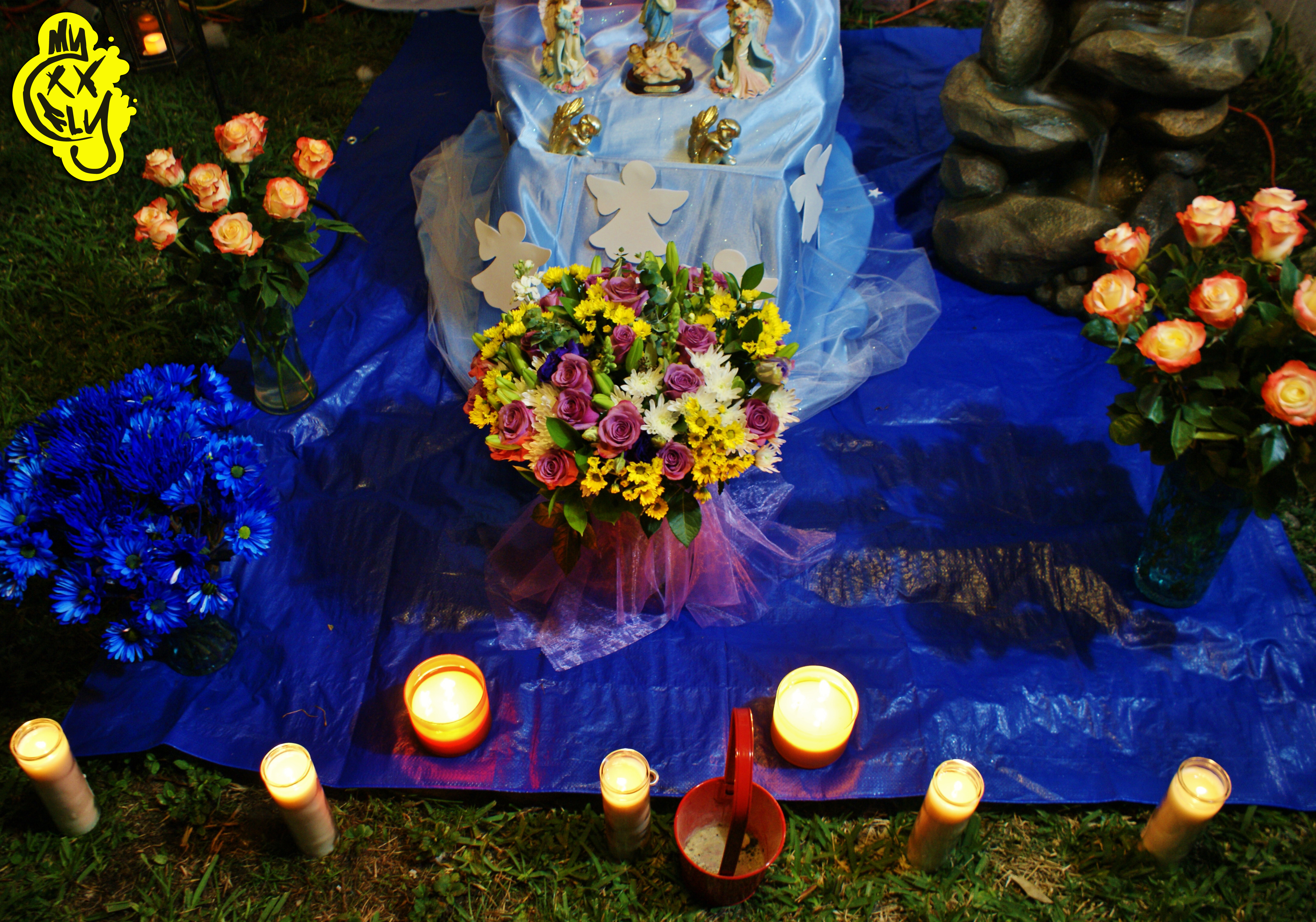
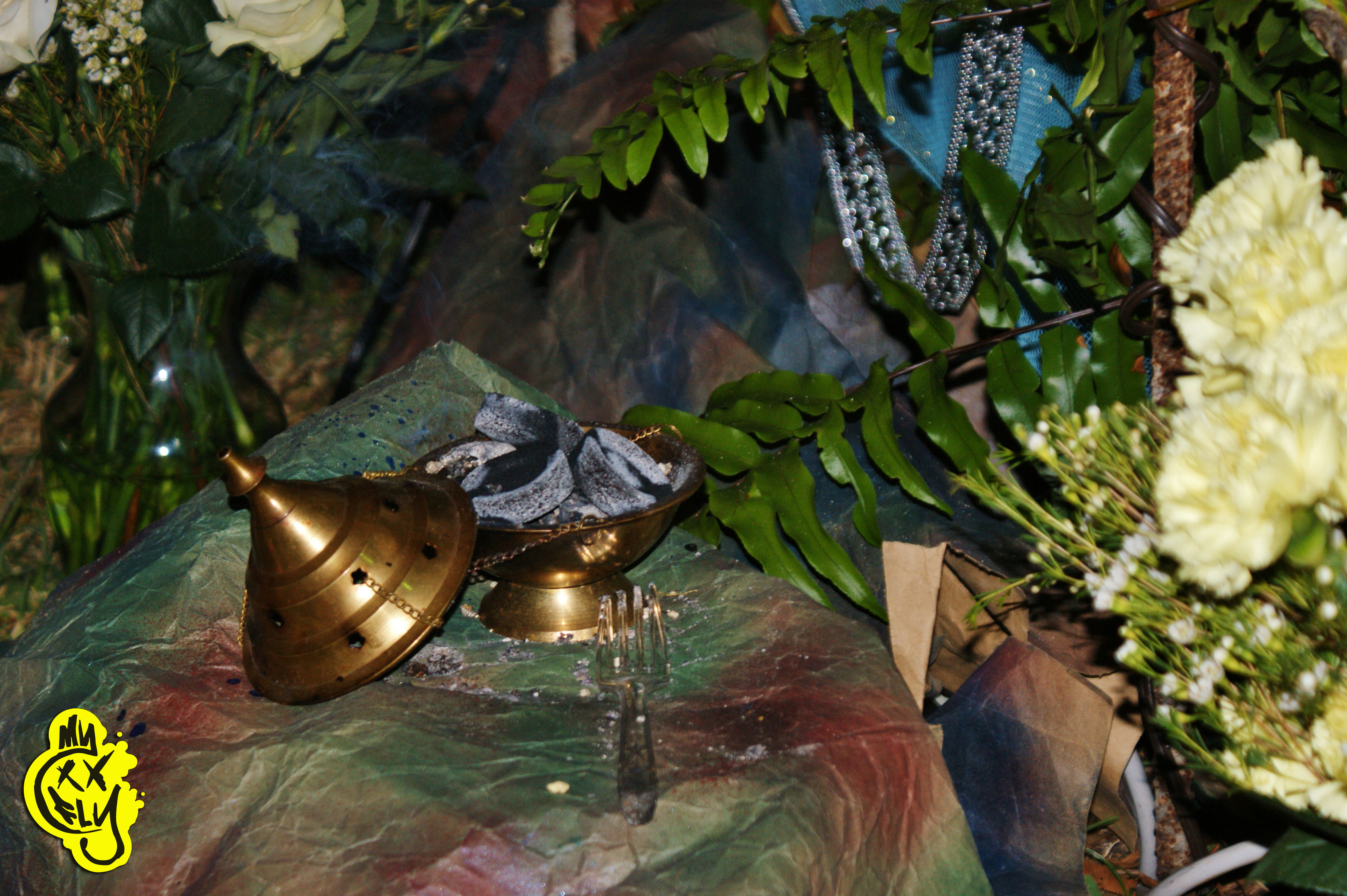
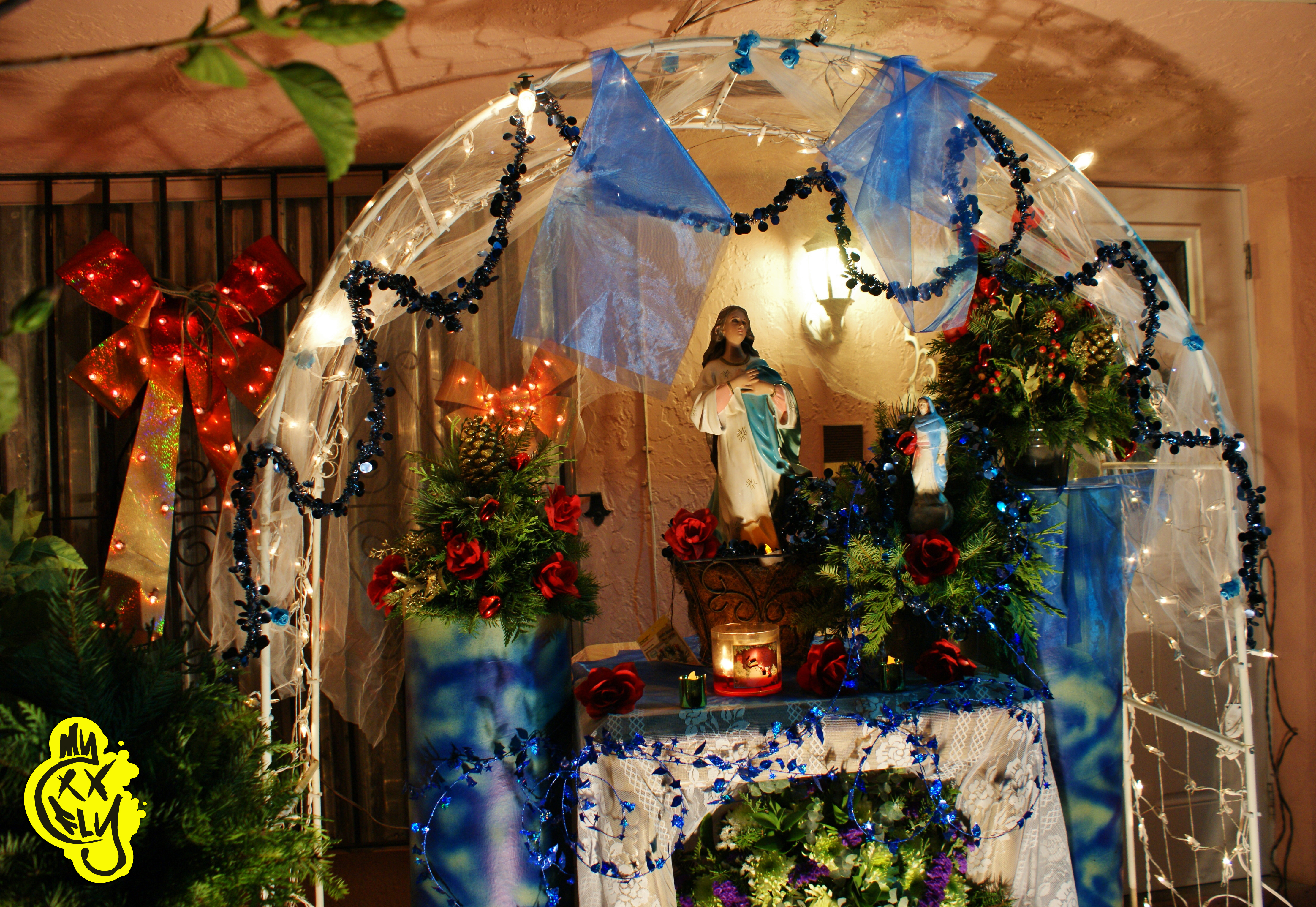
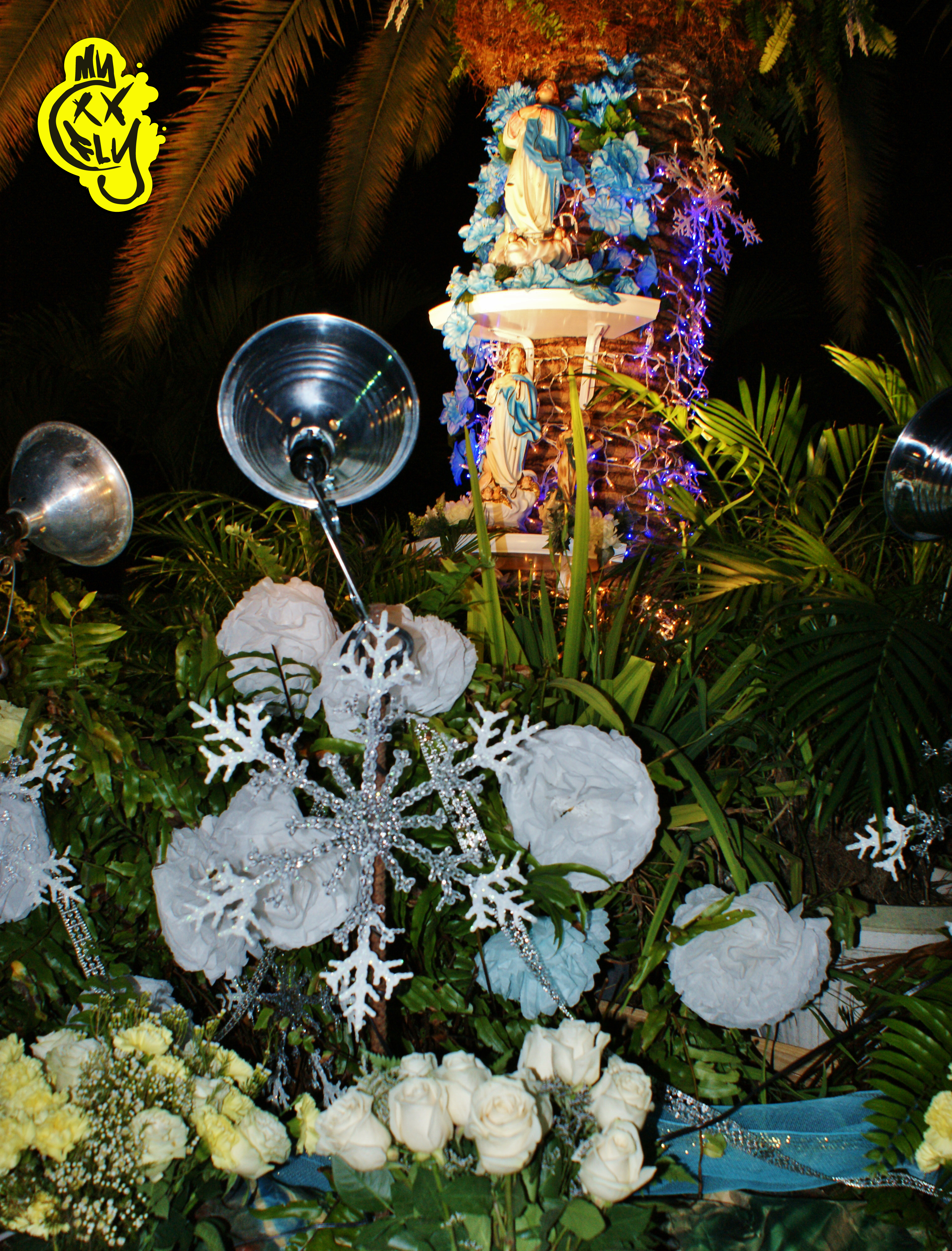
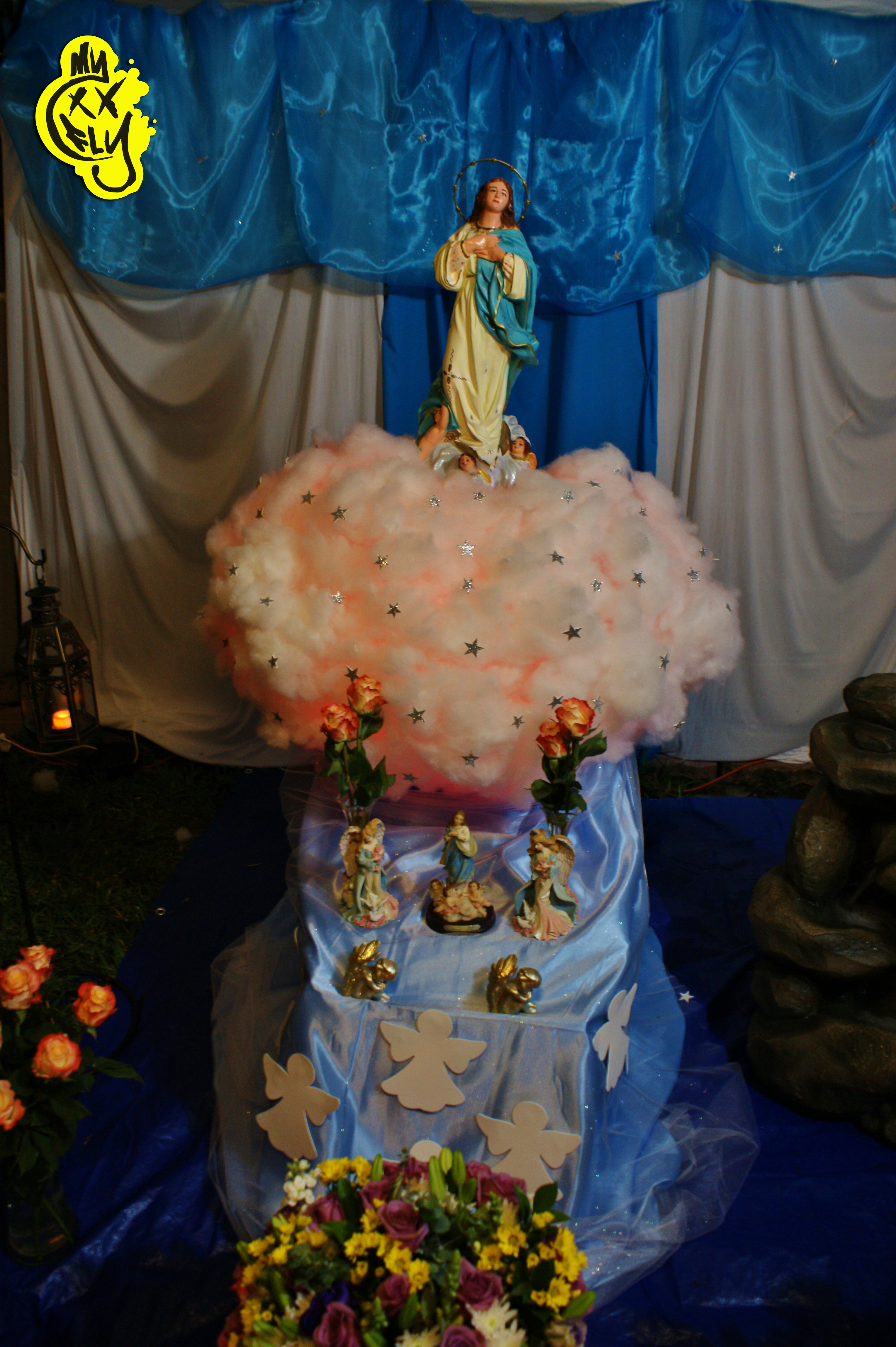
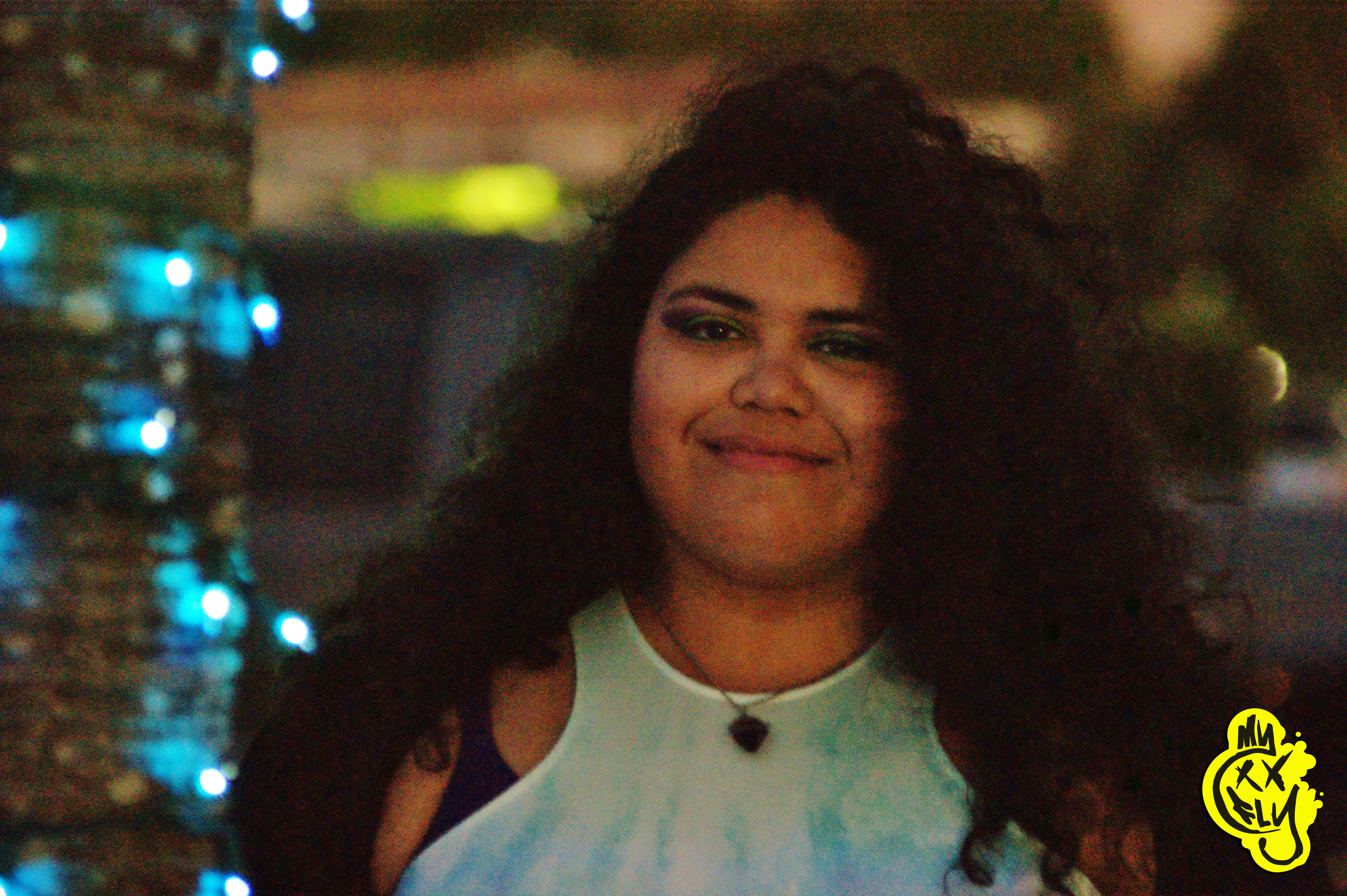
I love “latino” altars such as these, so powerful and colourful and faith inspiring. I’m not Christian but I respect Jesus and His message to the world.
Thank you :)! The appeal for me is the nostalgia of my childhood and the cultural significance <3, nothing like it ^_^.
Thank you for this article! I’m a Nicamericano living in Dallas, where my family and relatives come together every December to celebrate ‘La Purísima’. I love your explanation of this very unique celebration! I’ll use it when I invite all my non-Nica friends!
Que viva la Virgen!
Hey Carlos! ¡¡Que viva la Virgen!! It’s so dope that you and your family are keeping the tradition alive in Dallas 😍. Thanks so much for reading this article and commenting. I’d love to see how y’all celebrate (we’re @myxxfly on IG), please keep in touch! In love and solidarity, – Yesenia